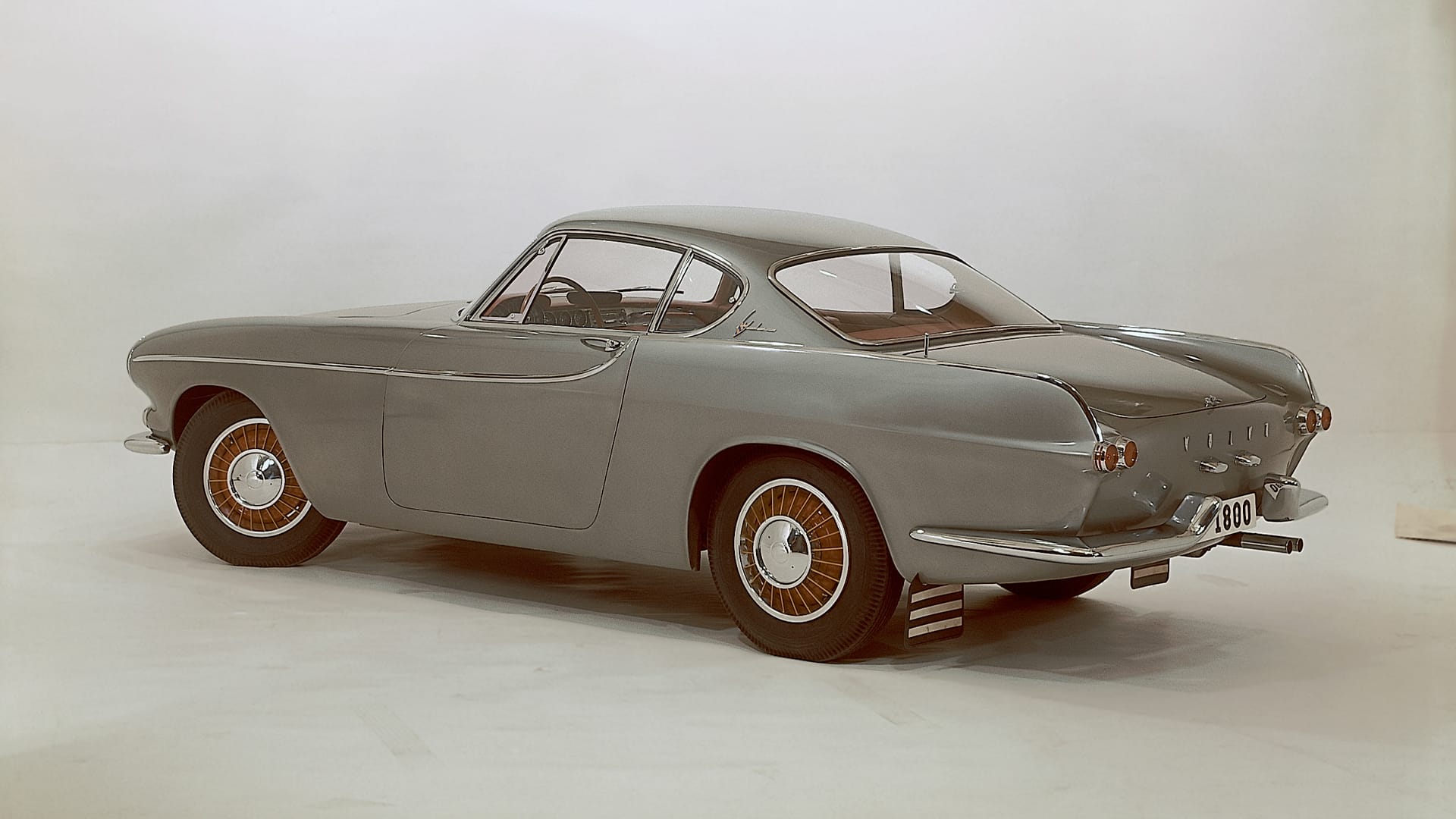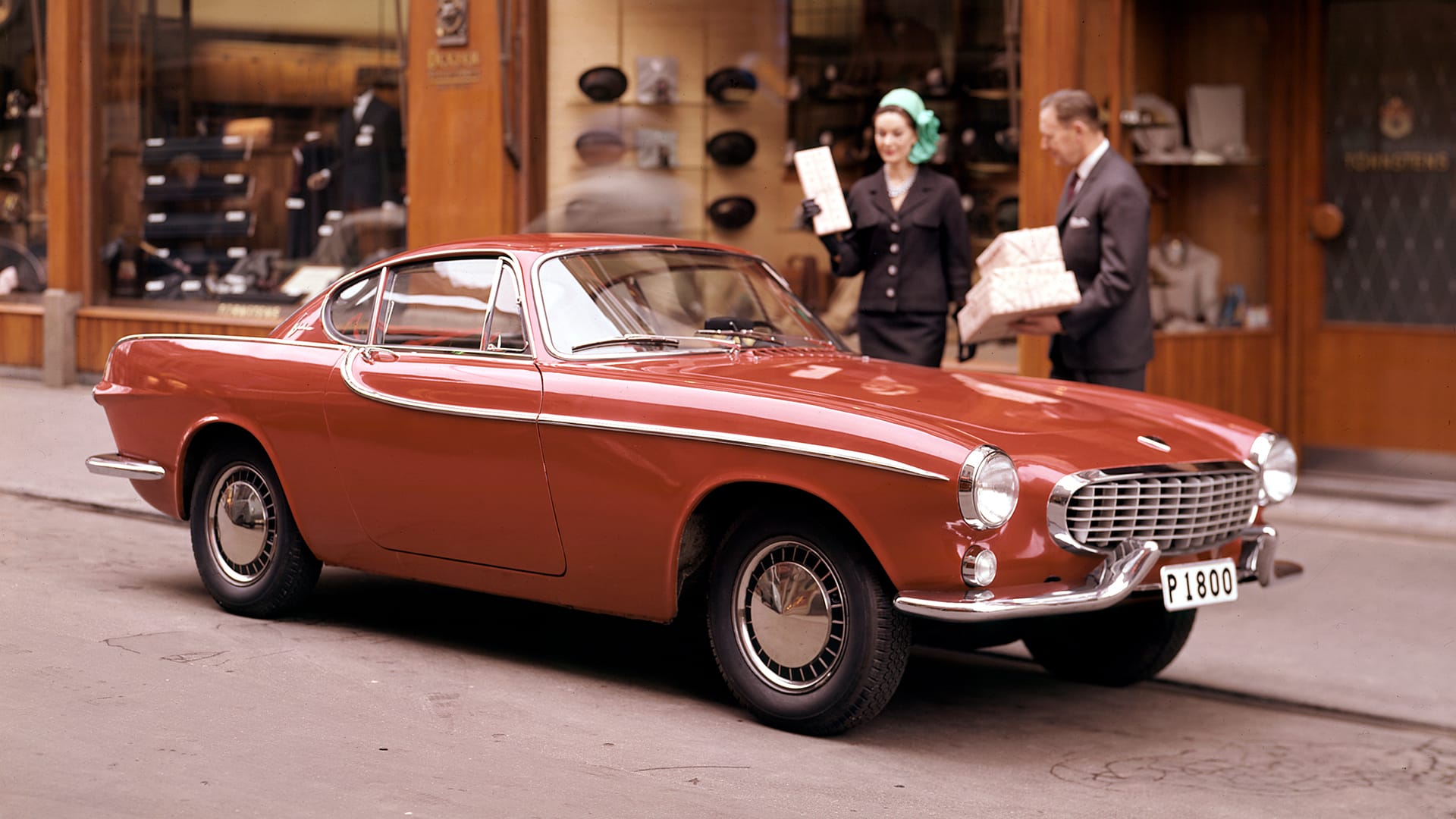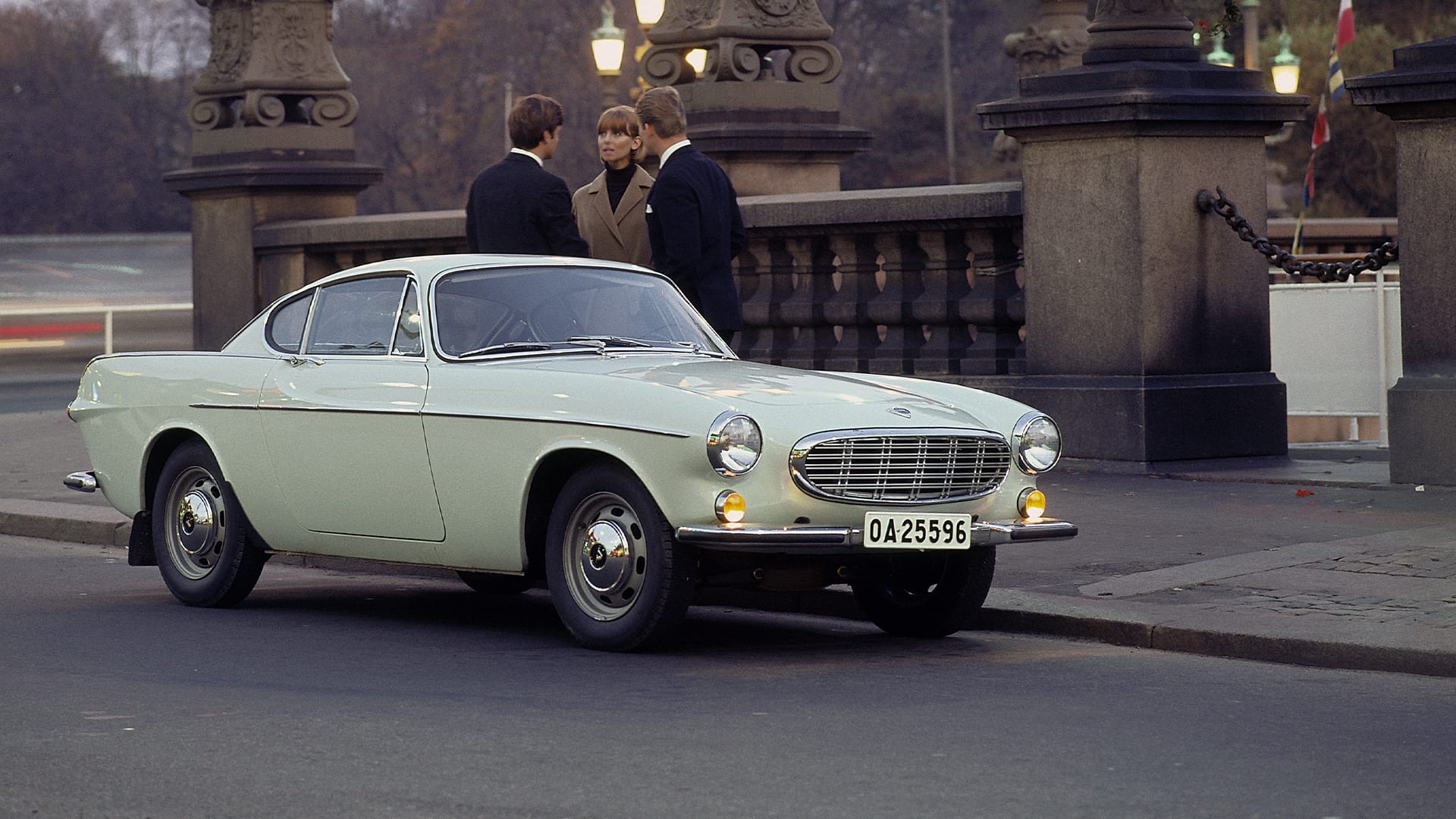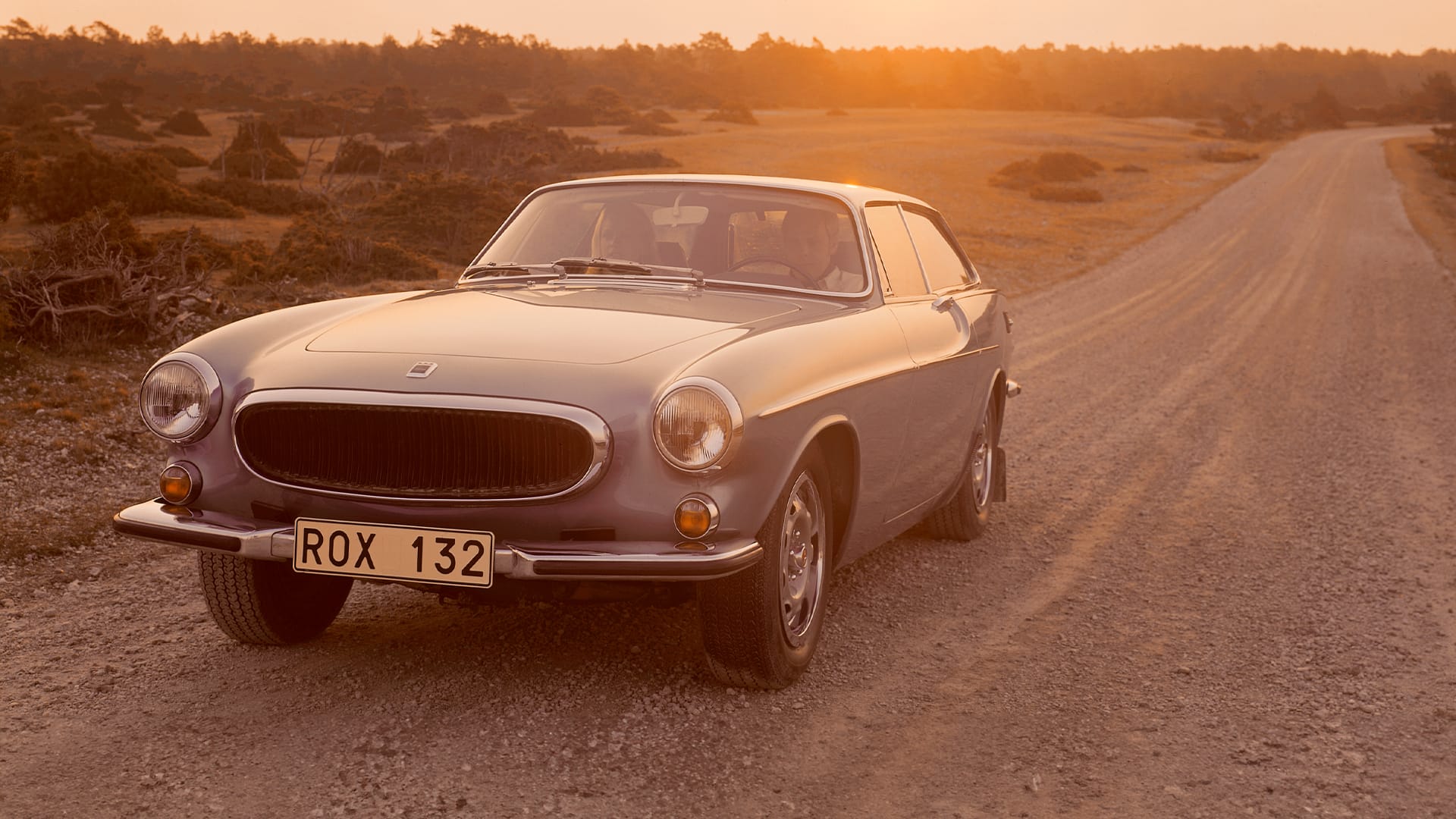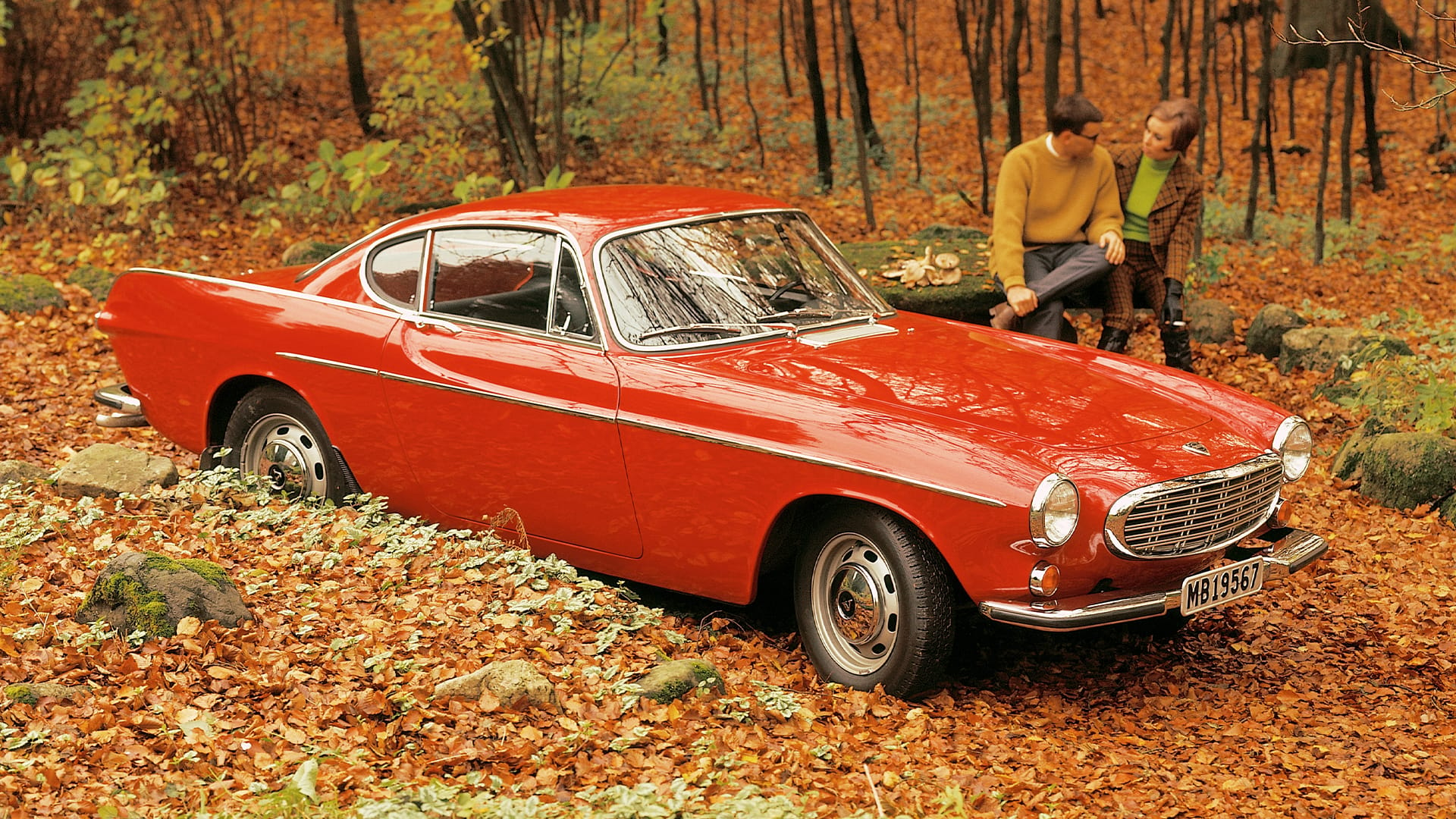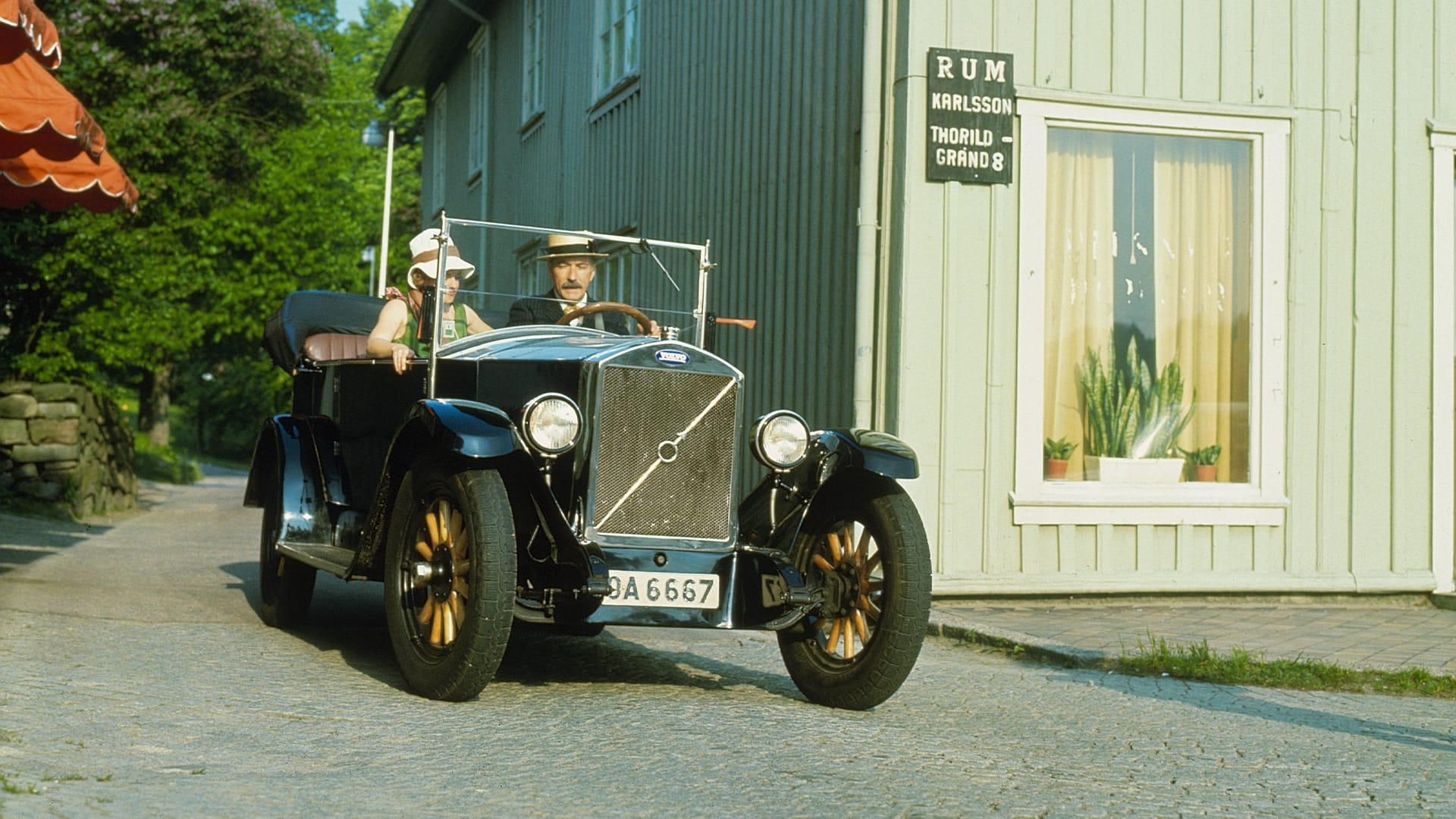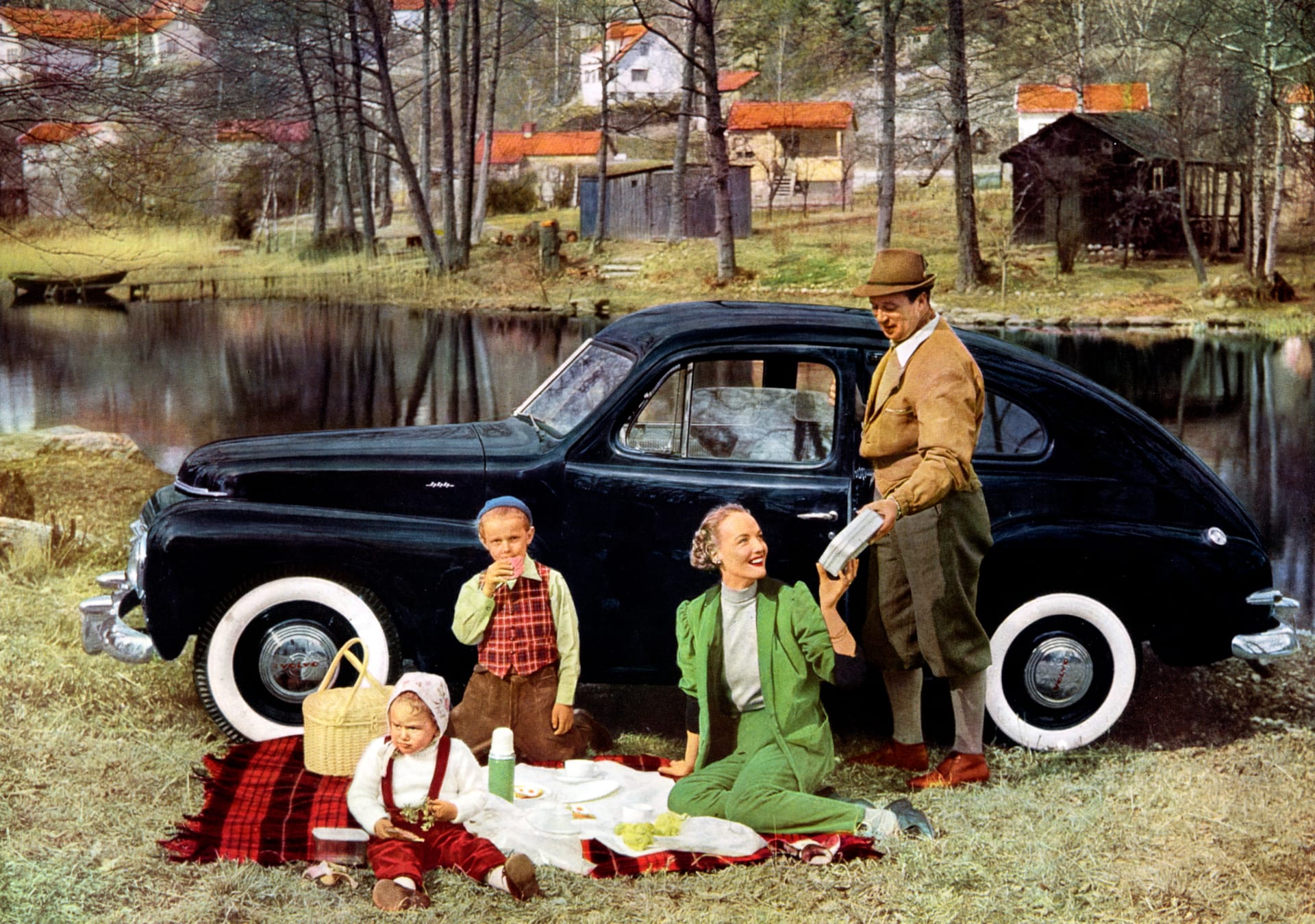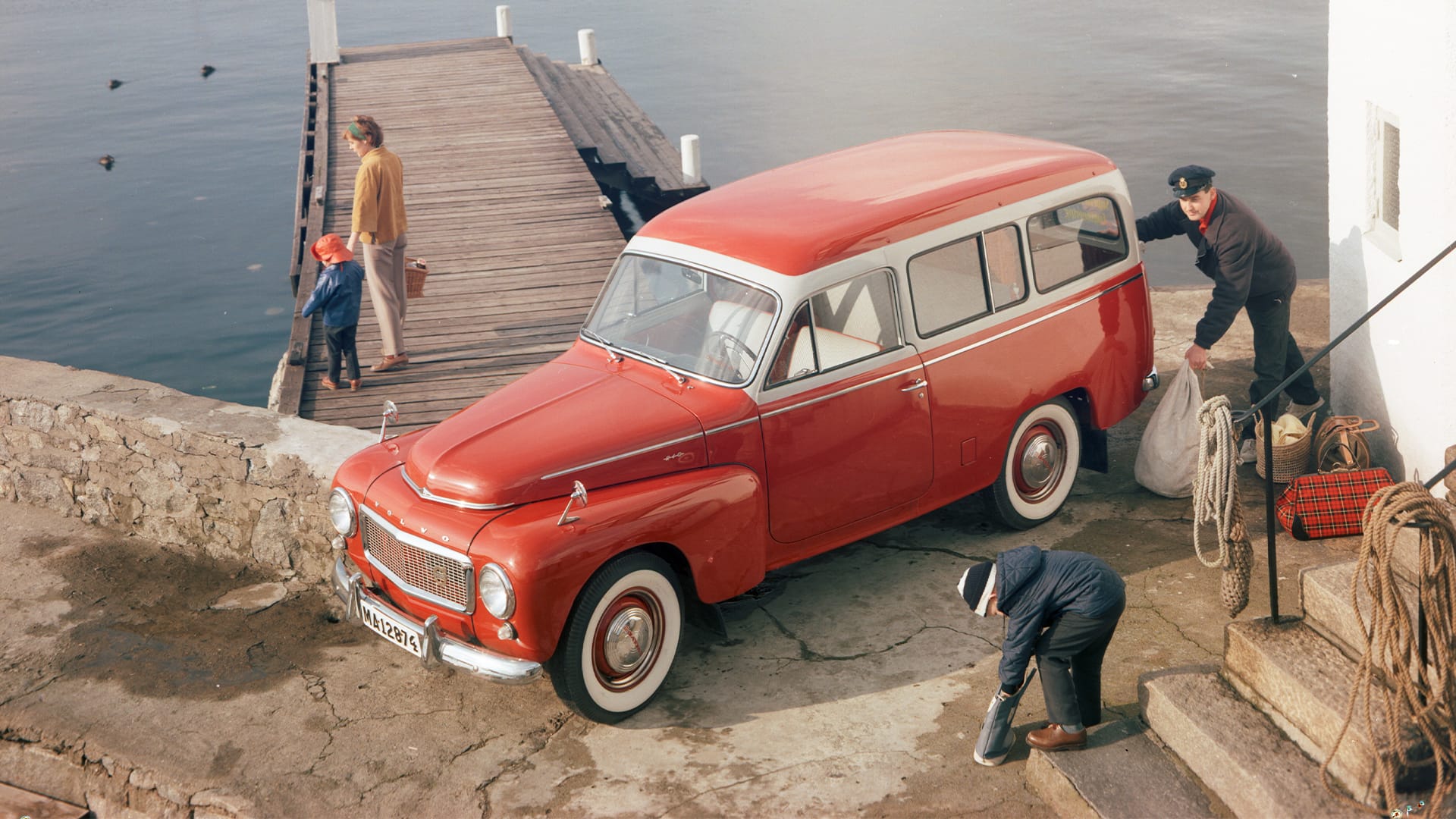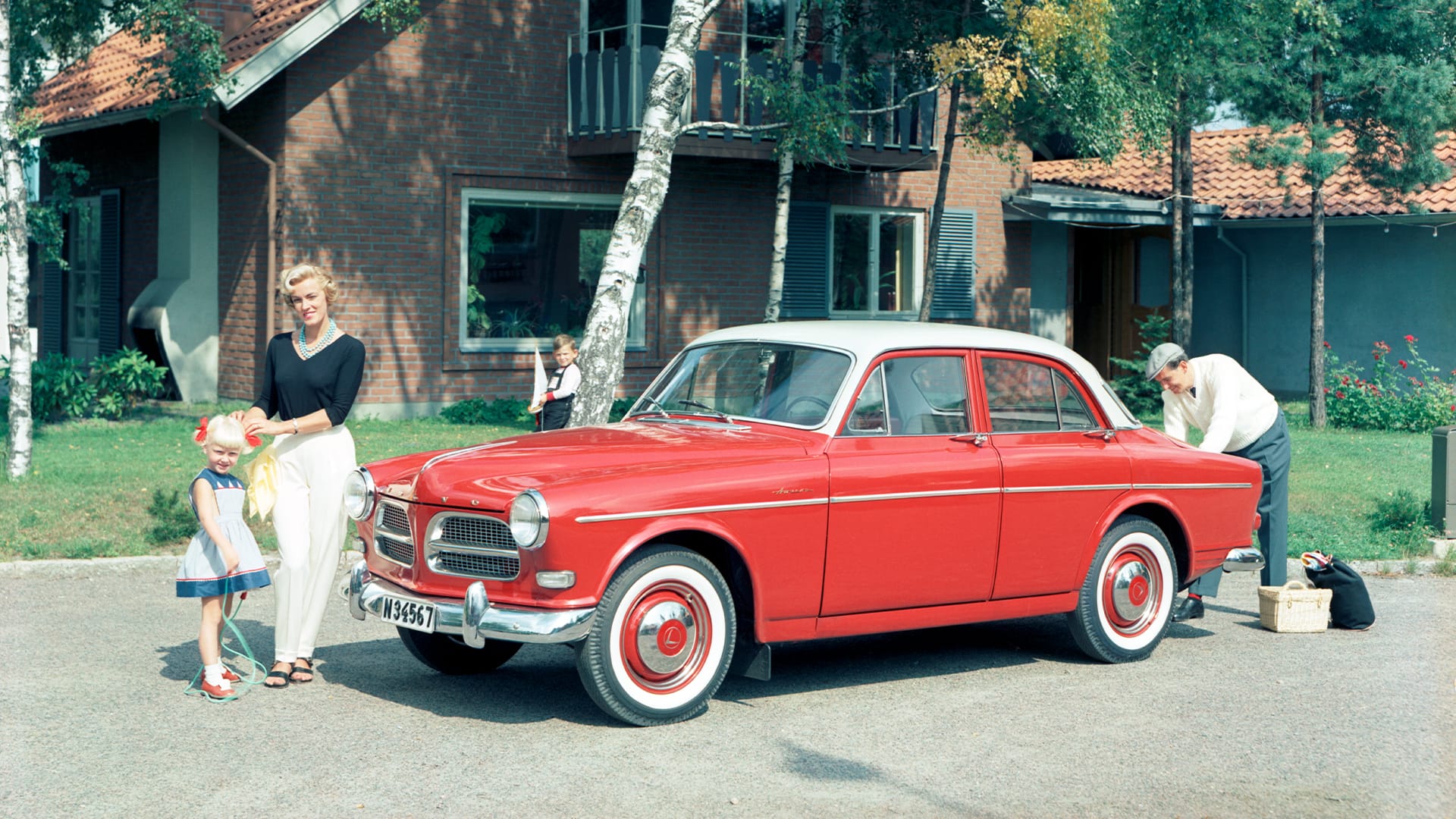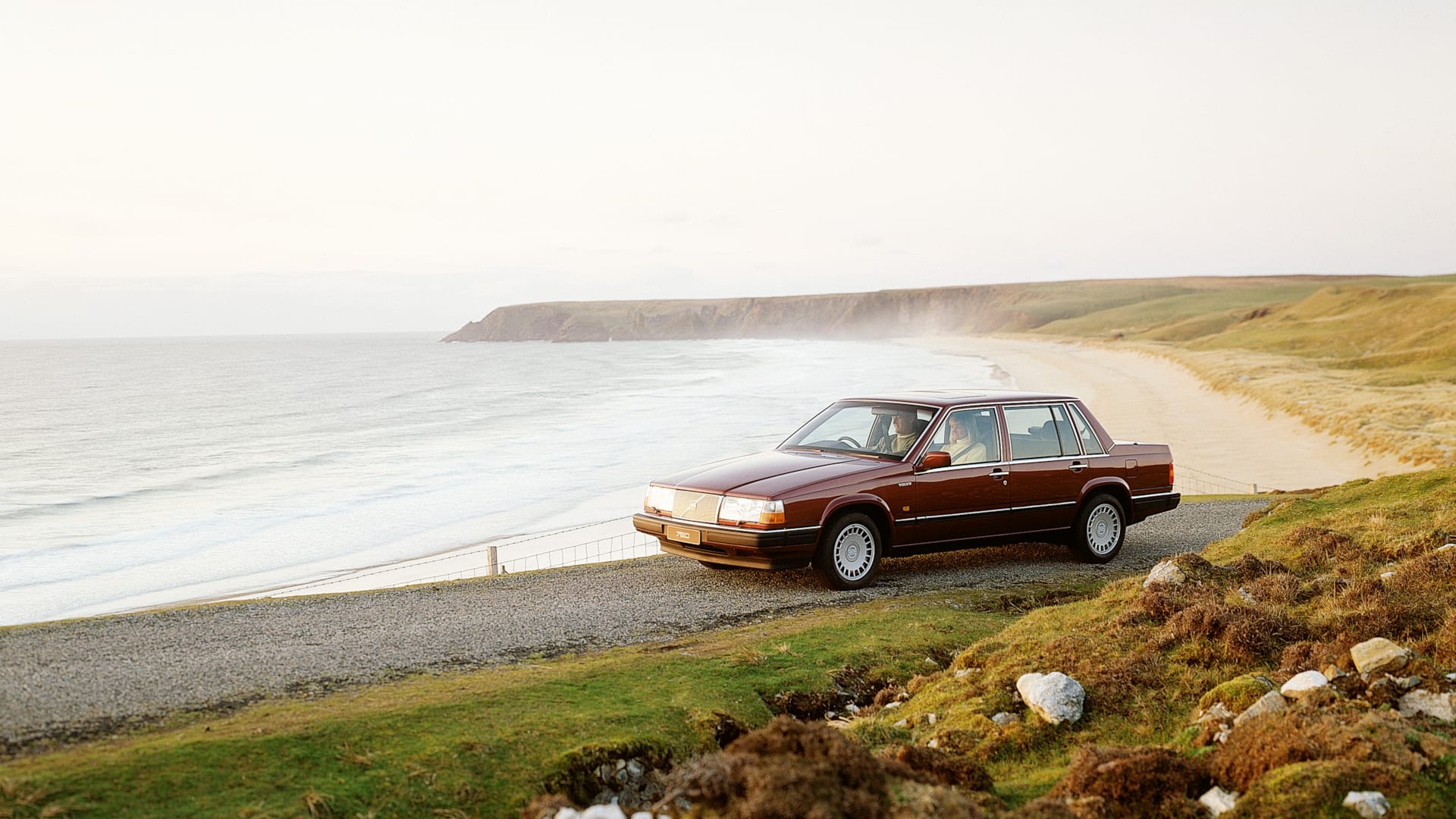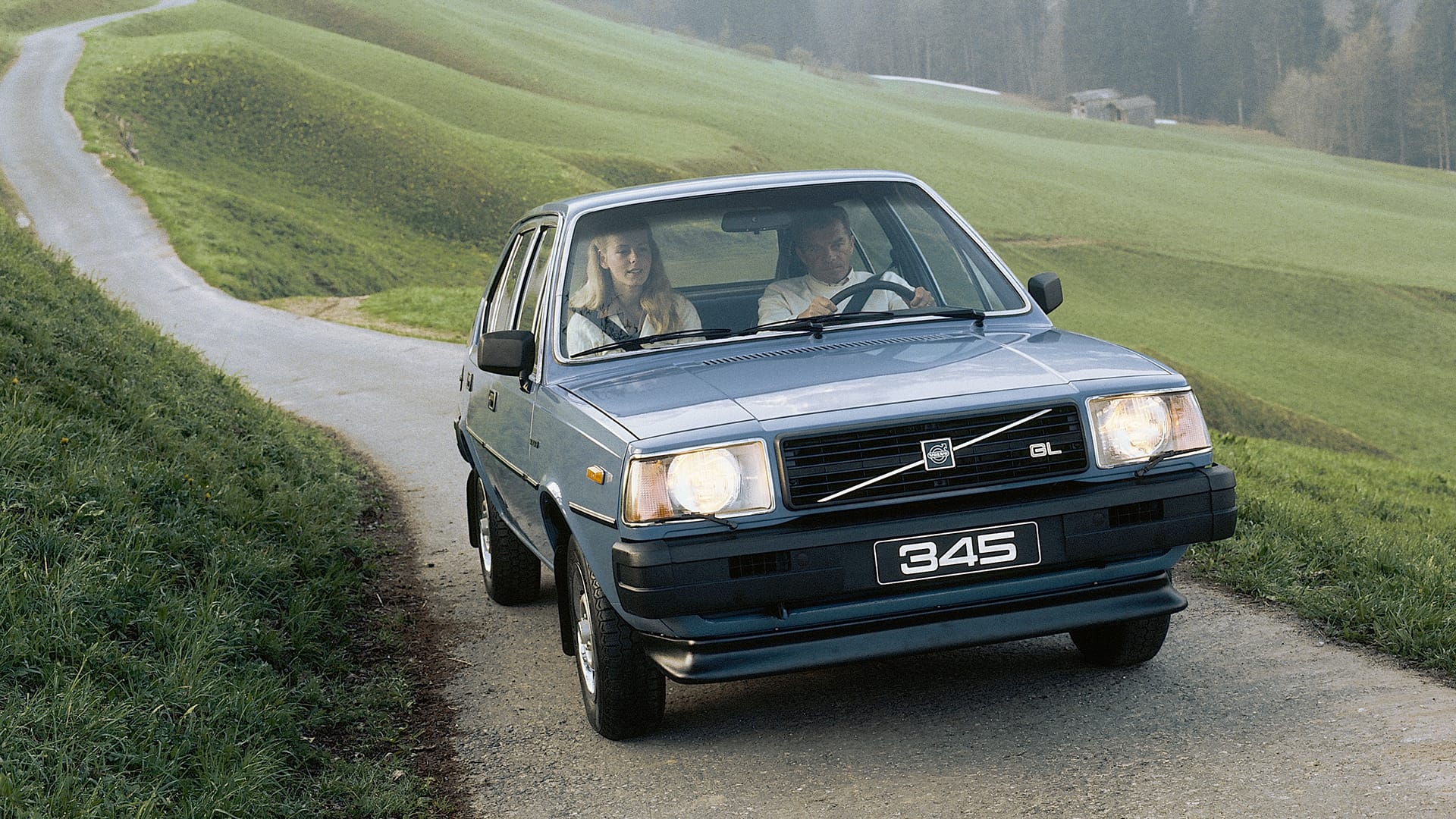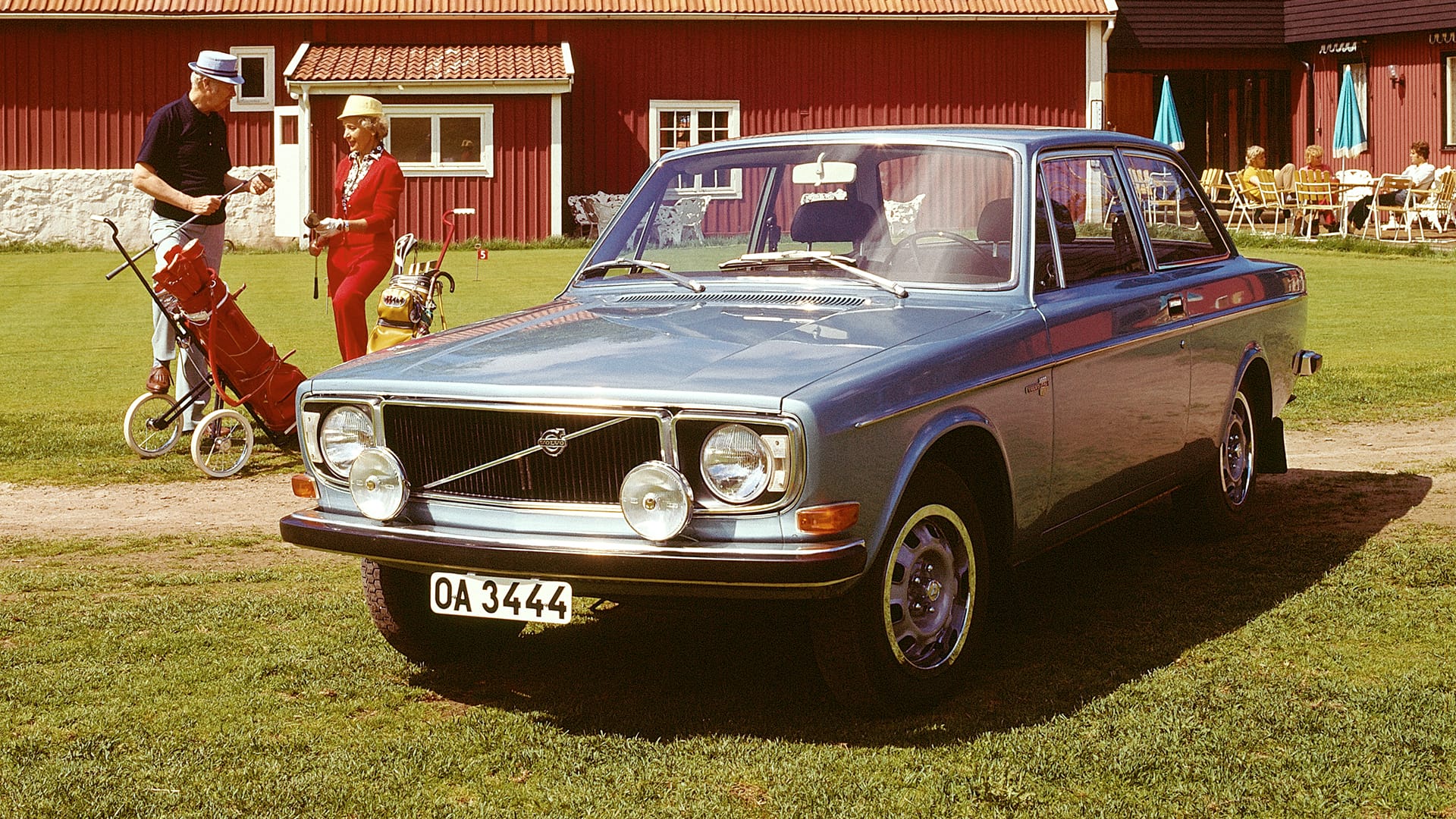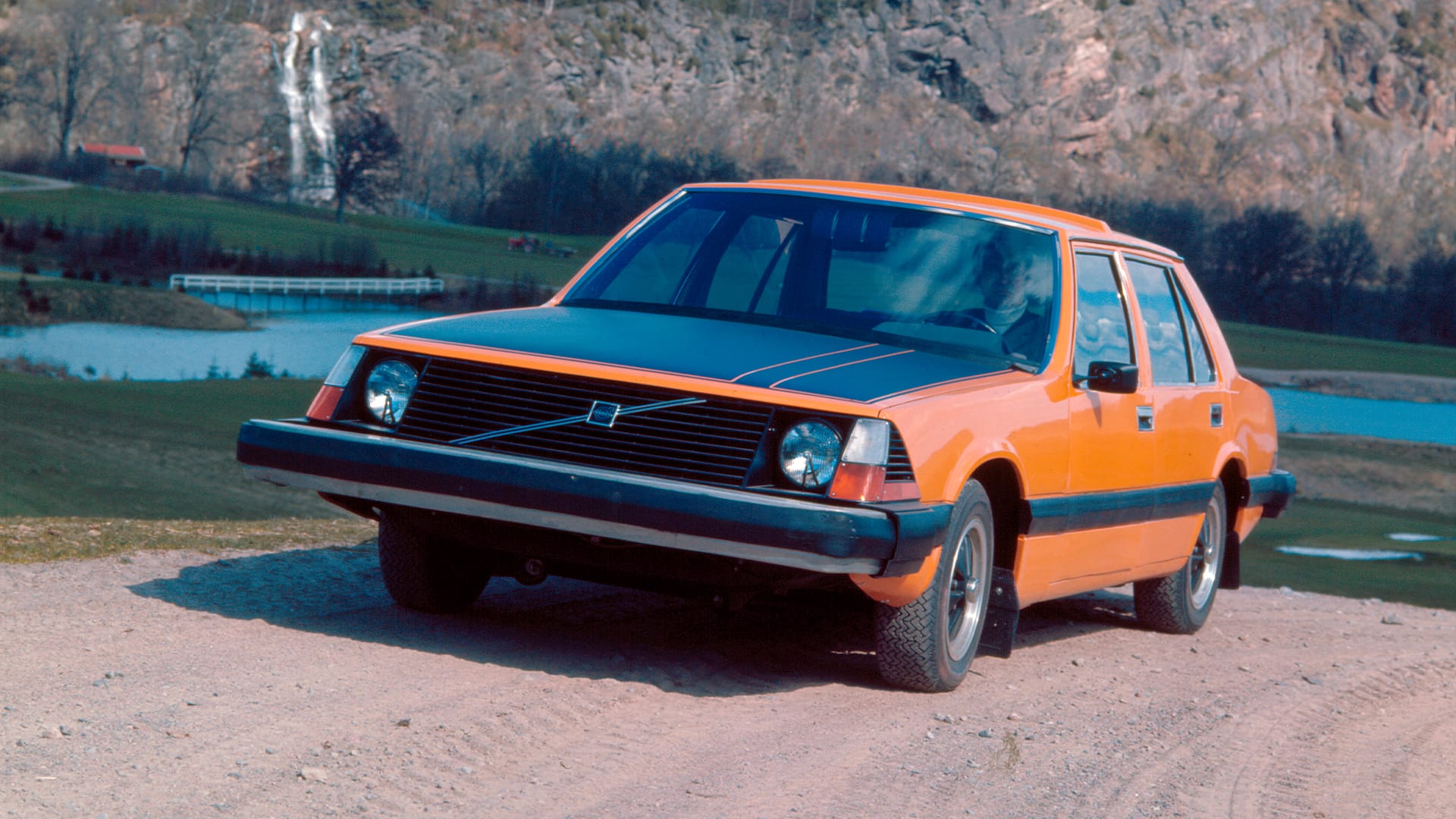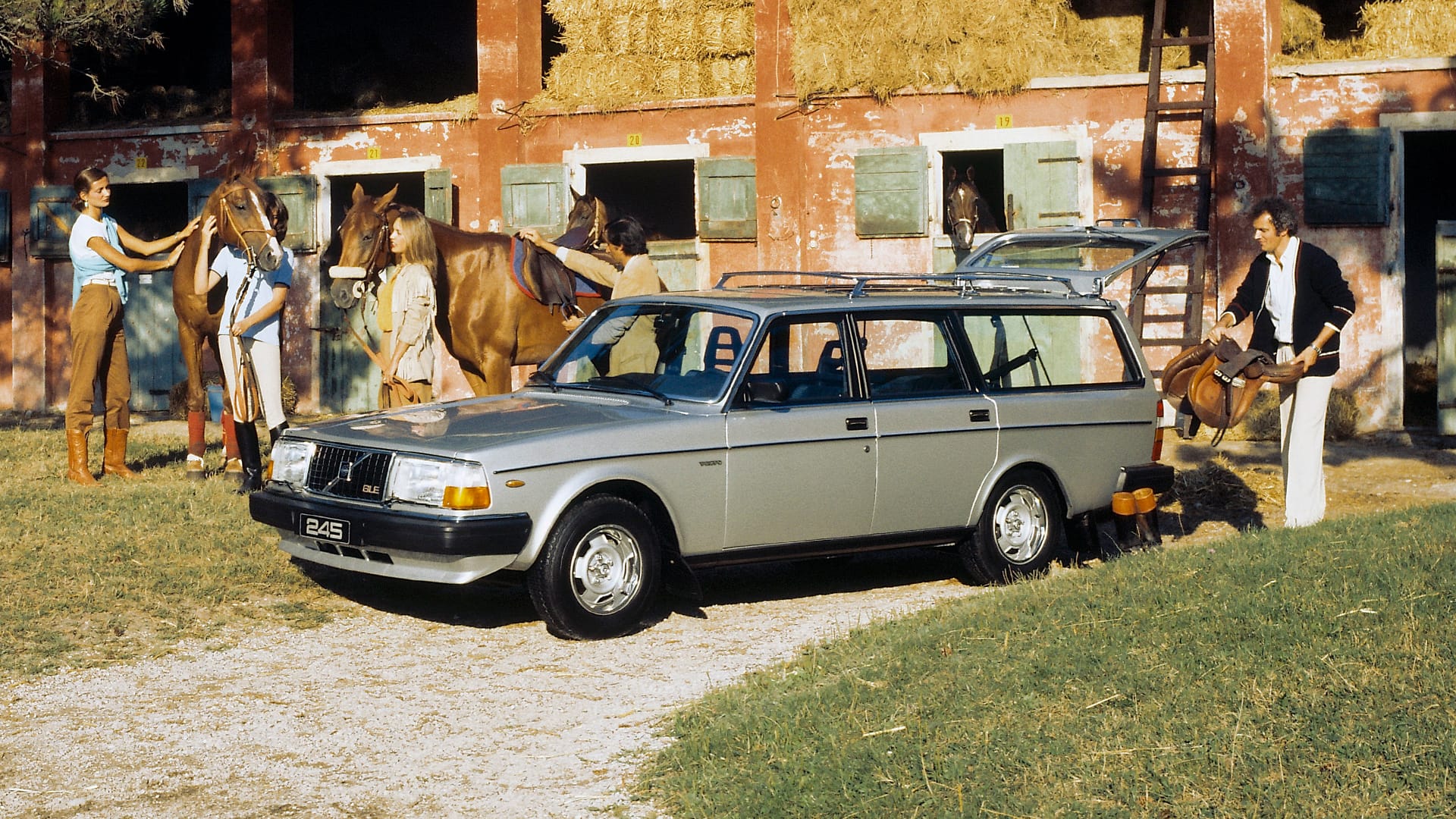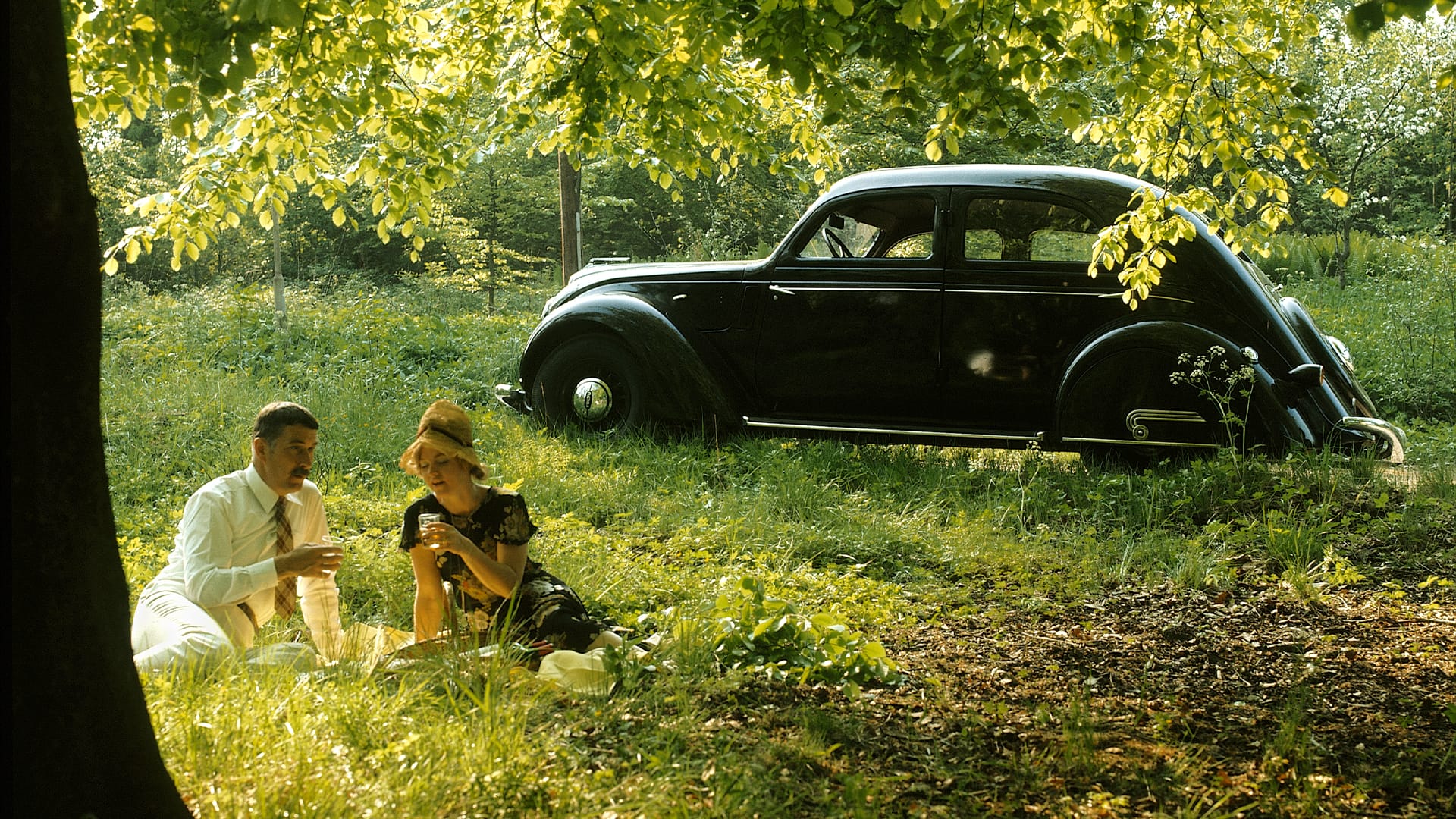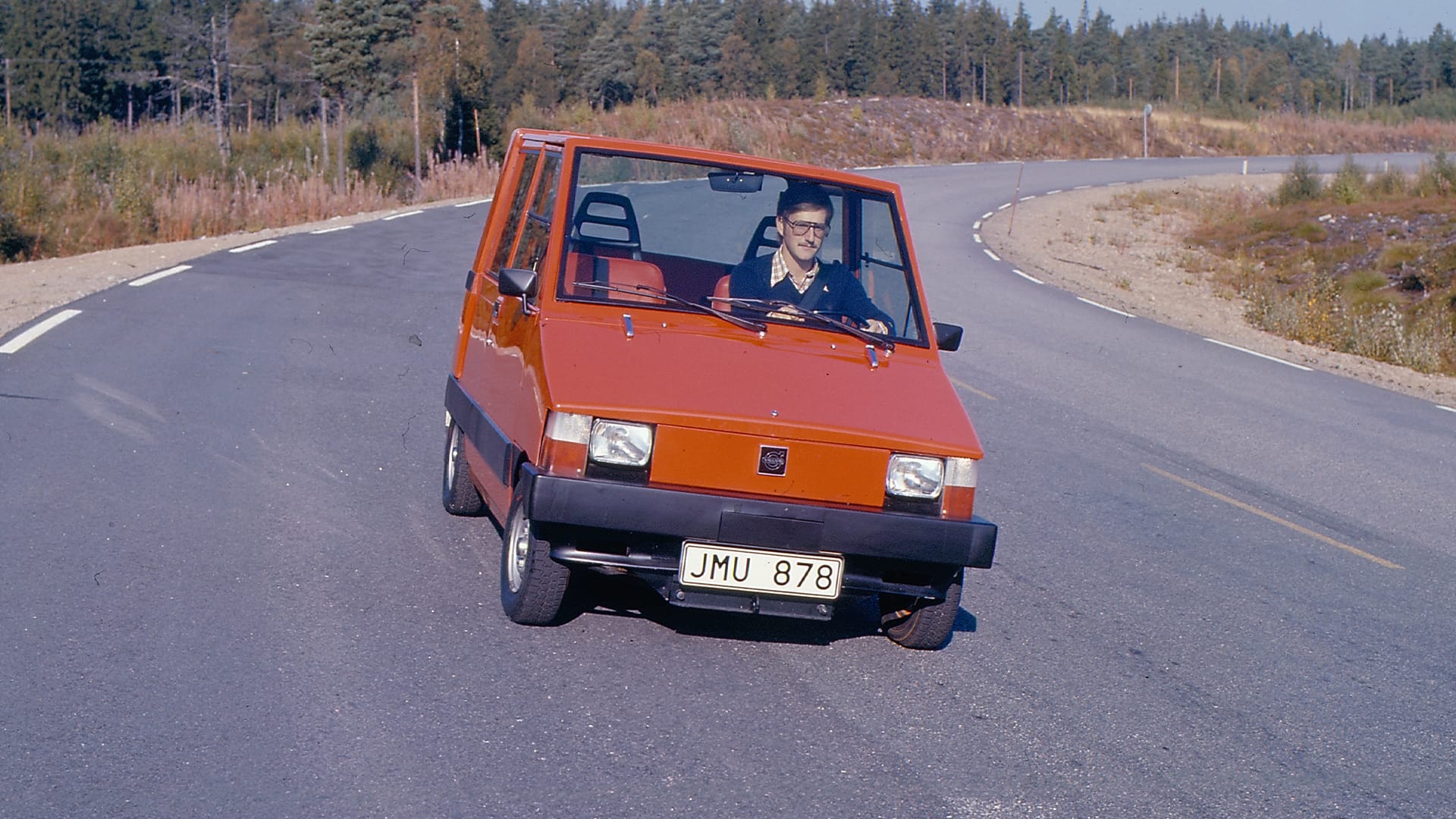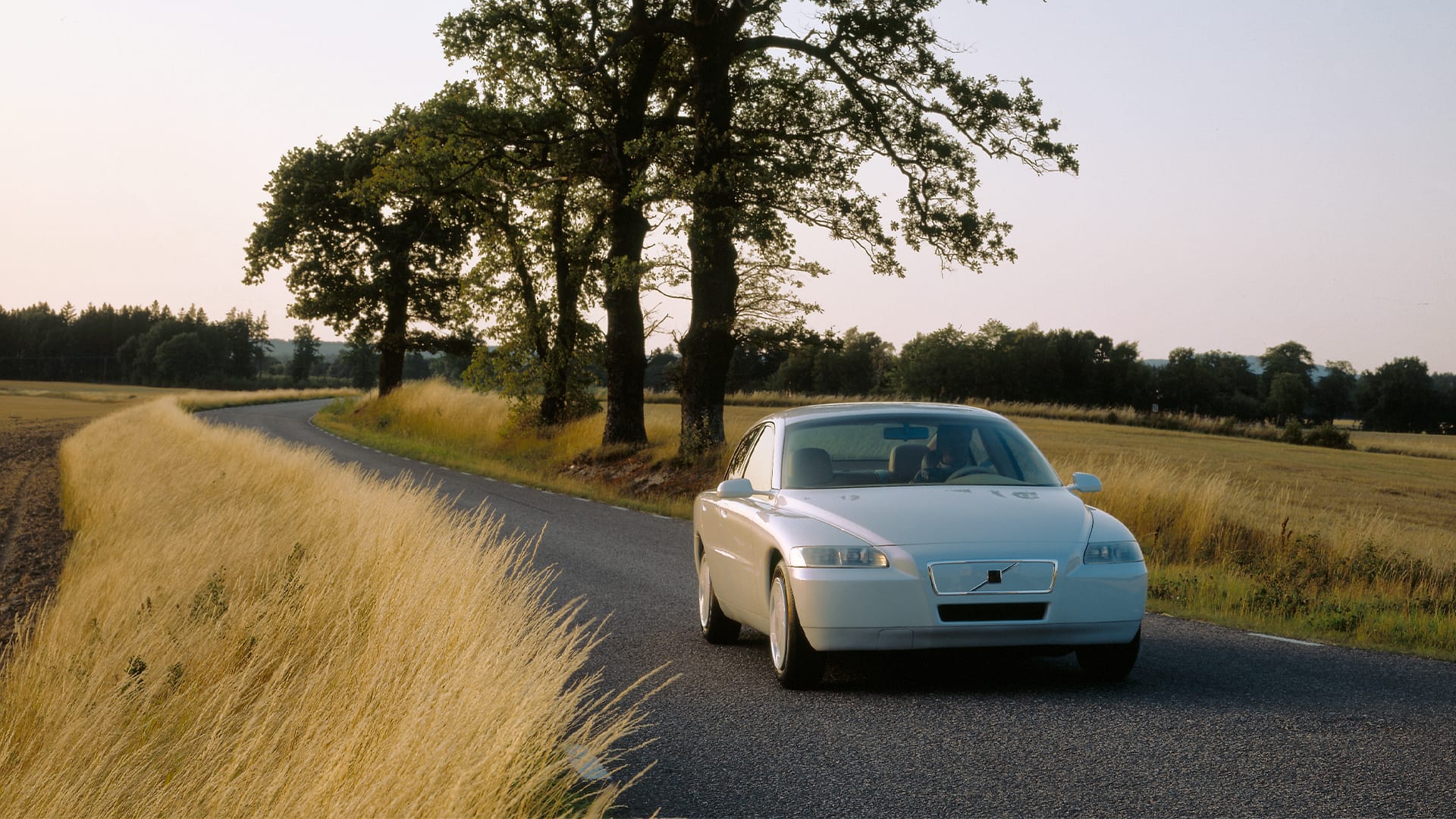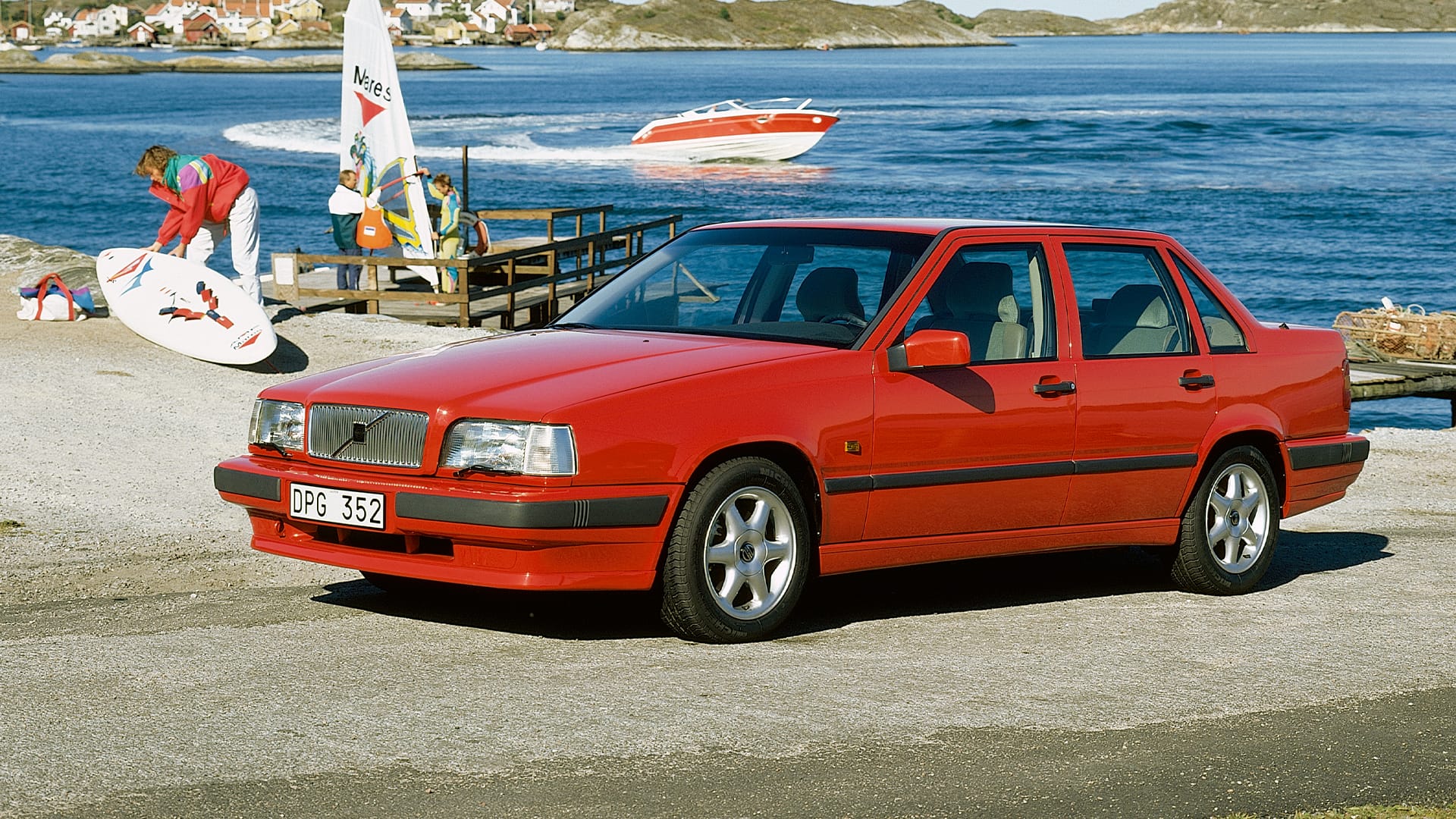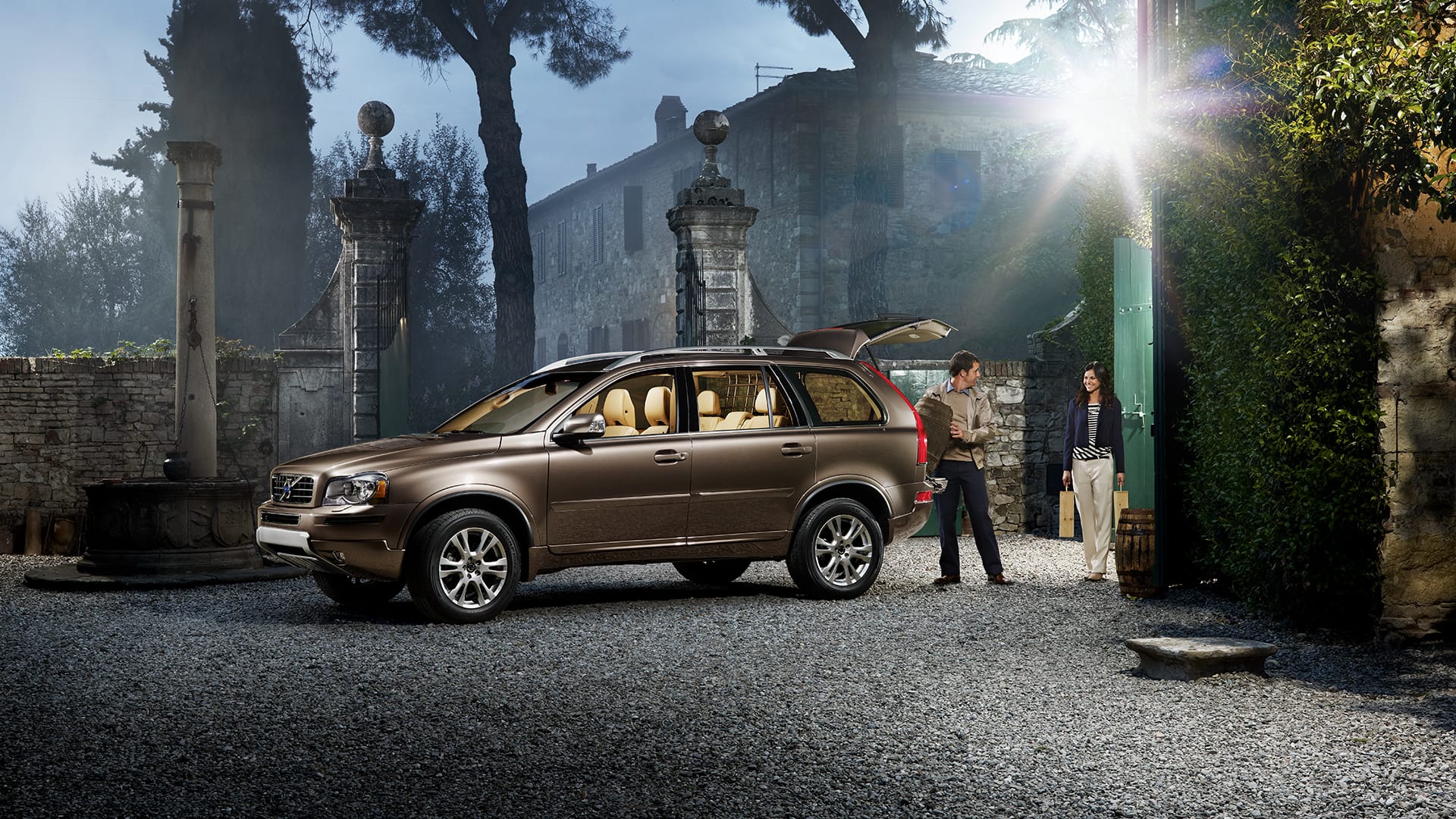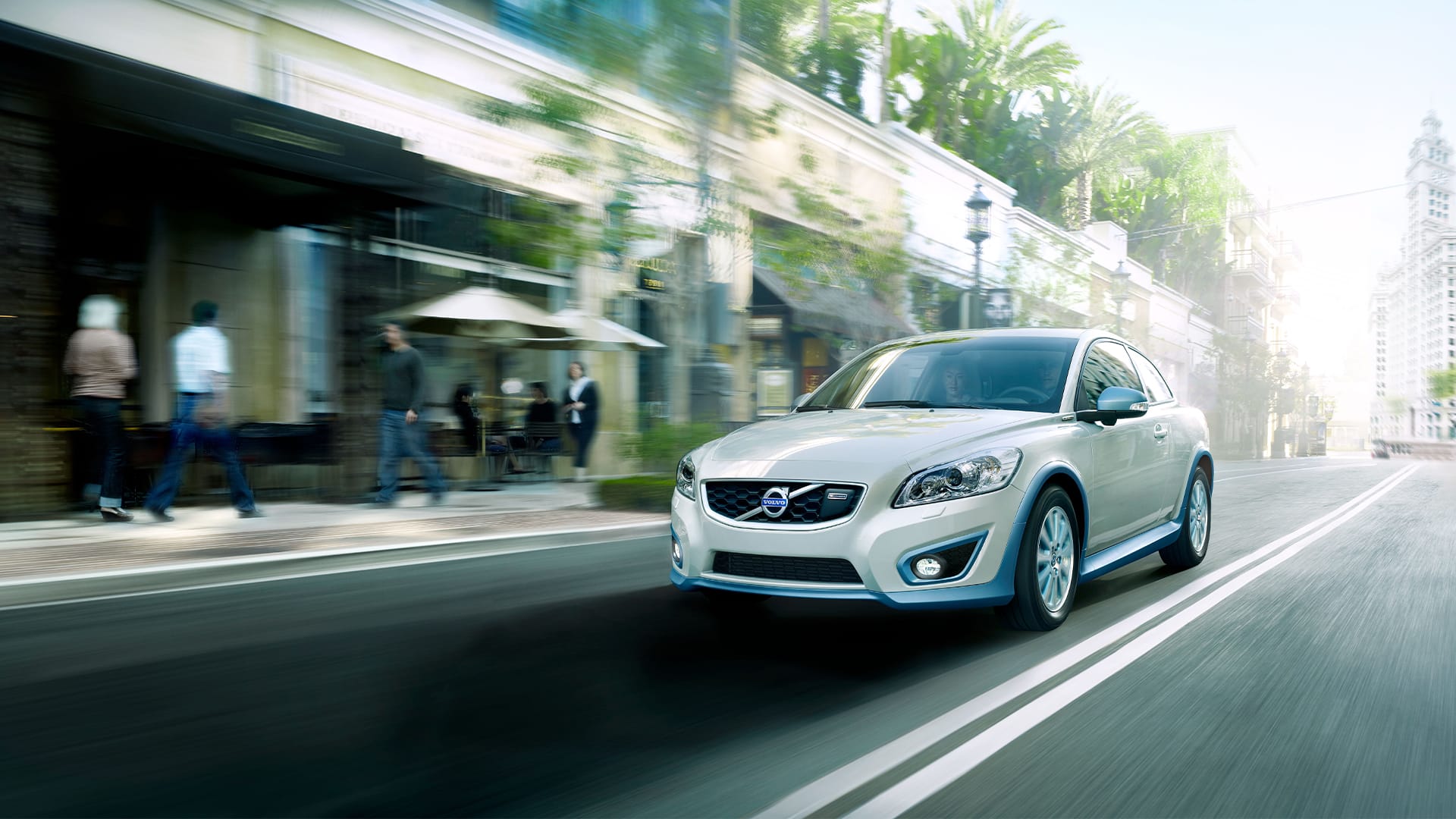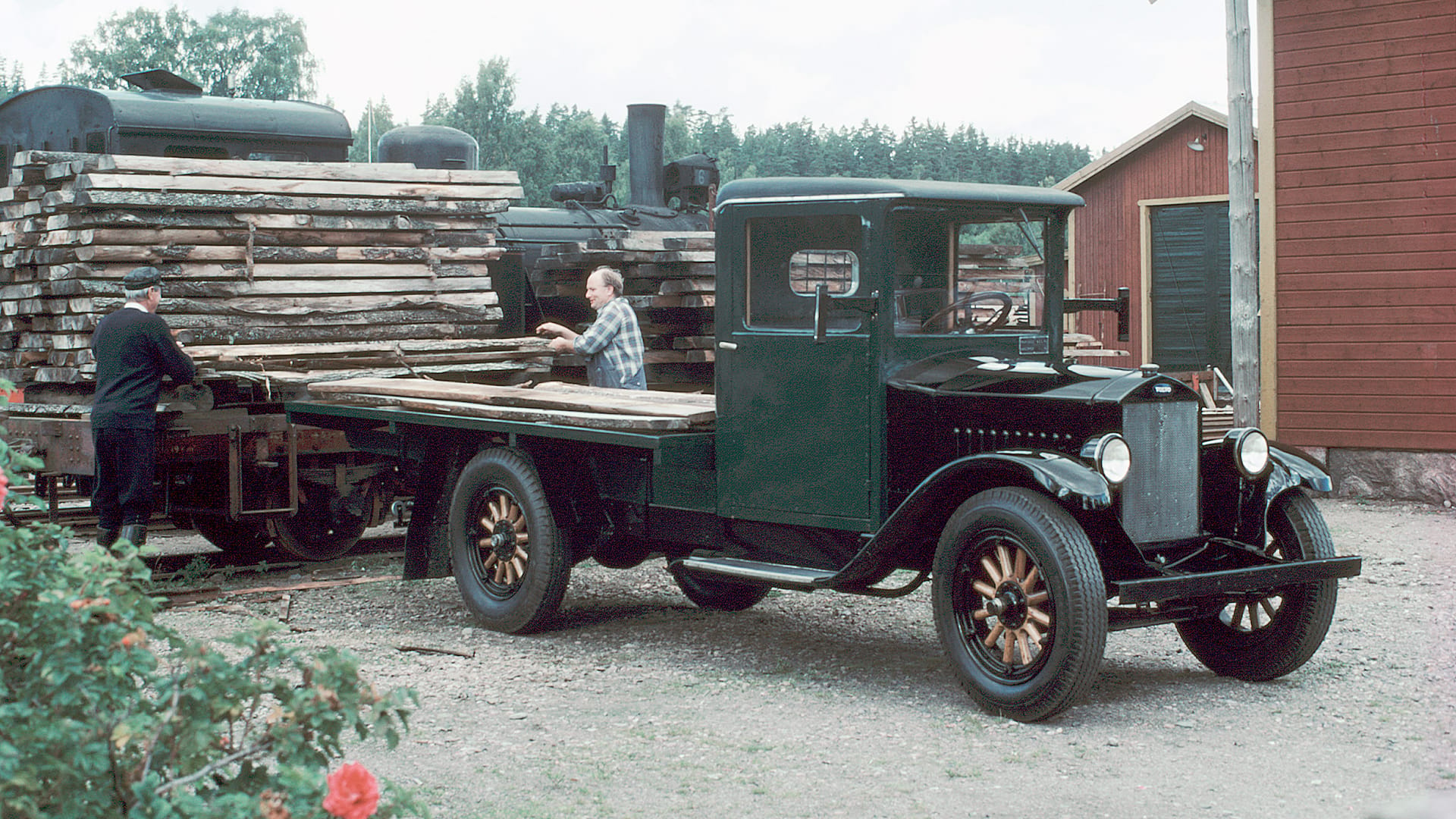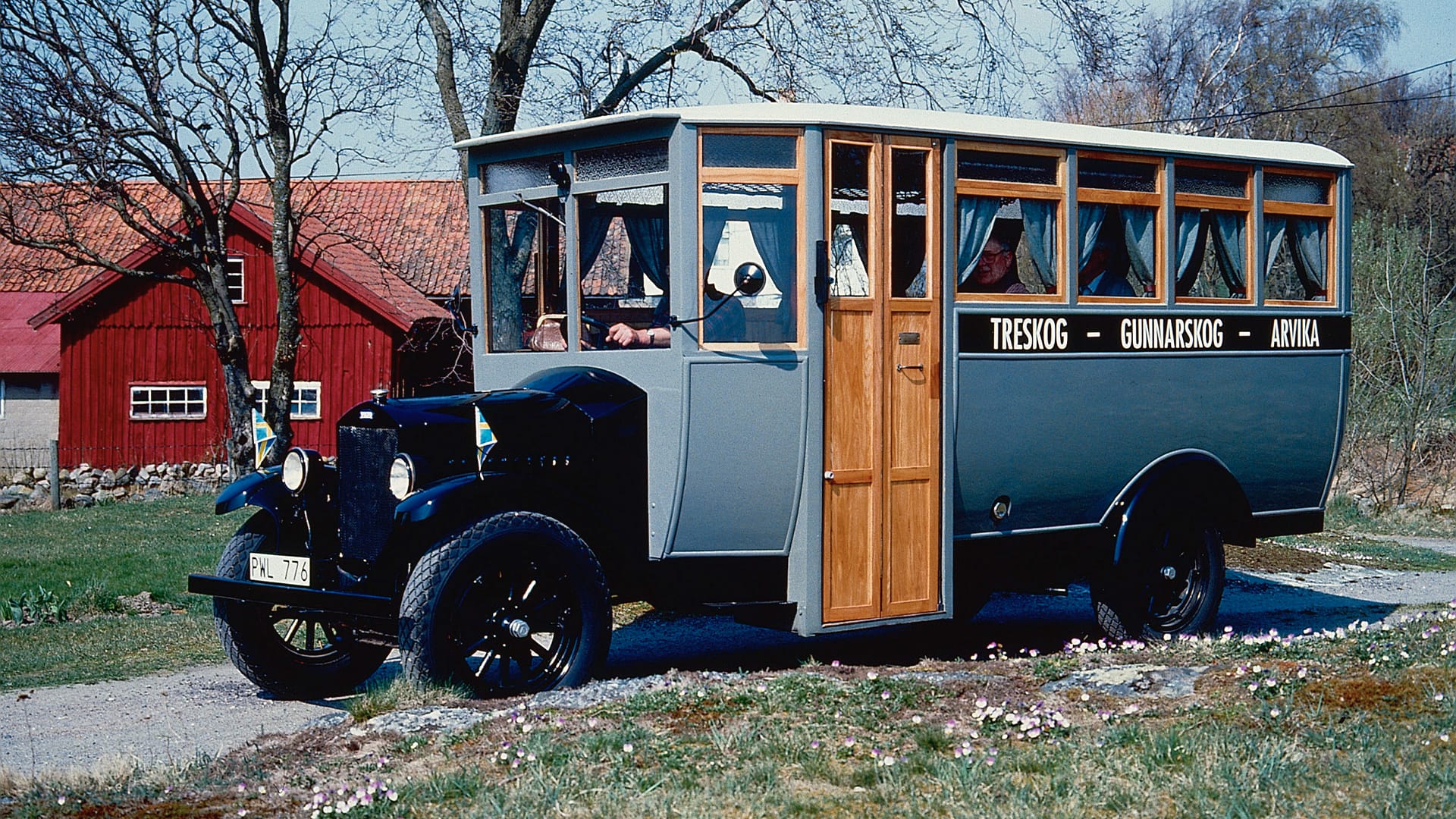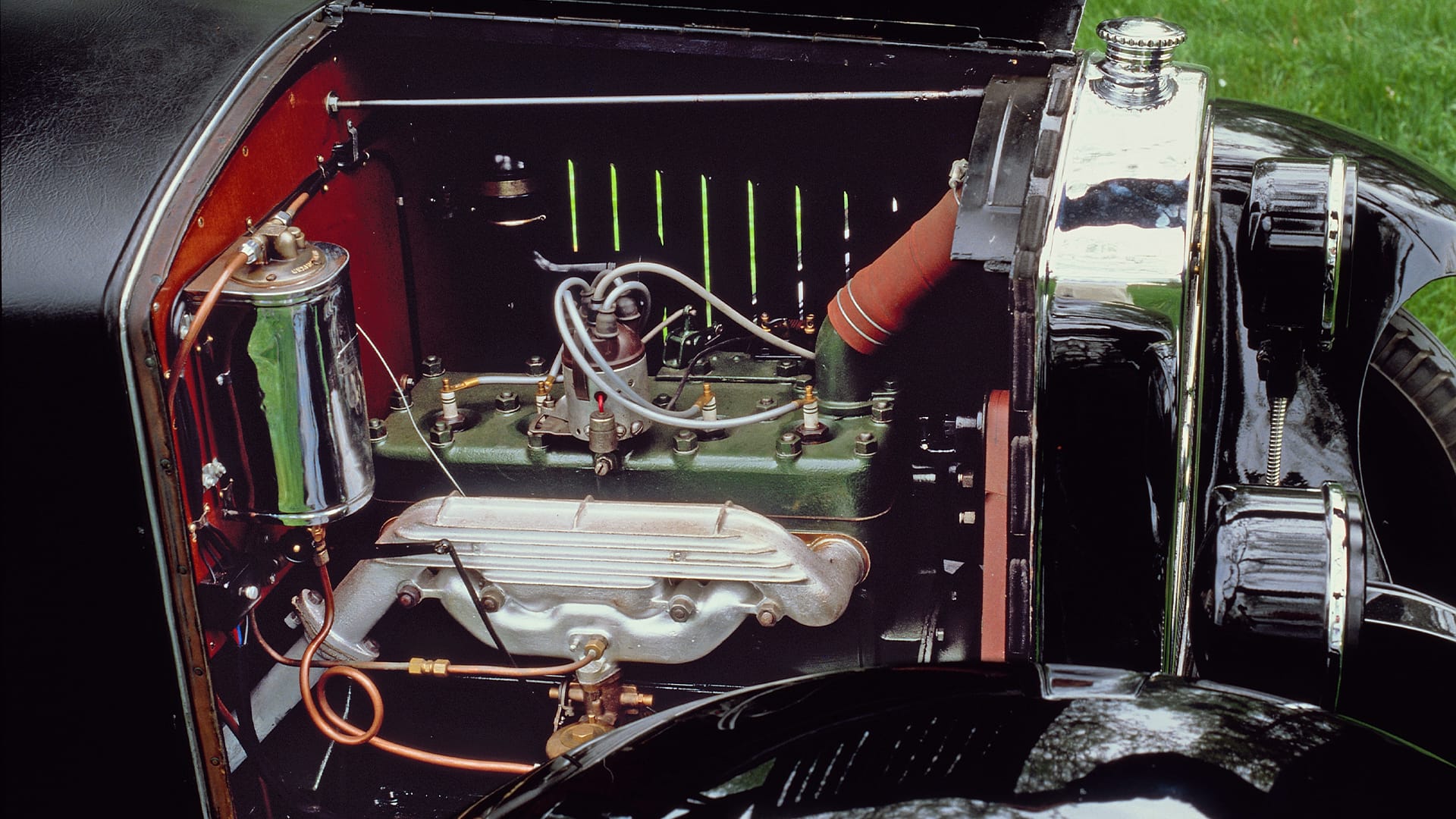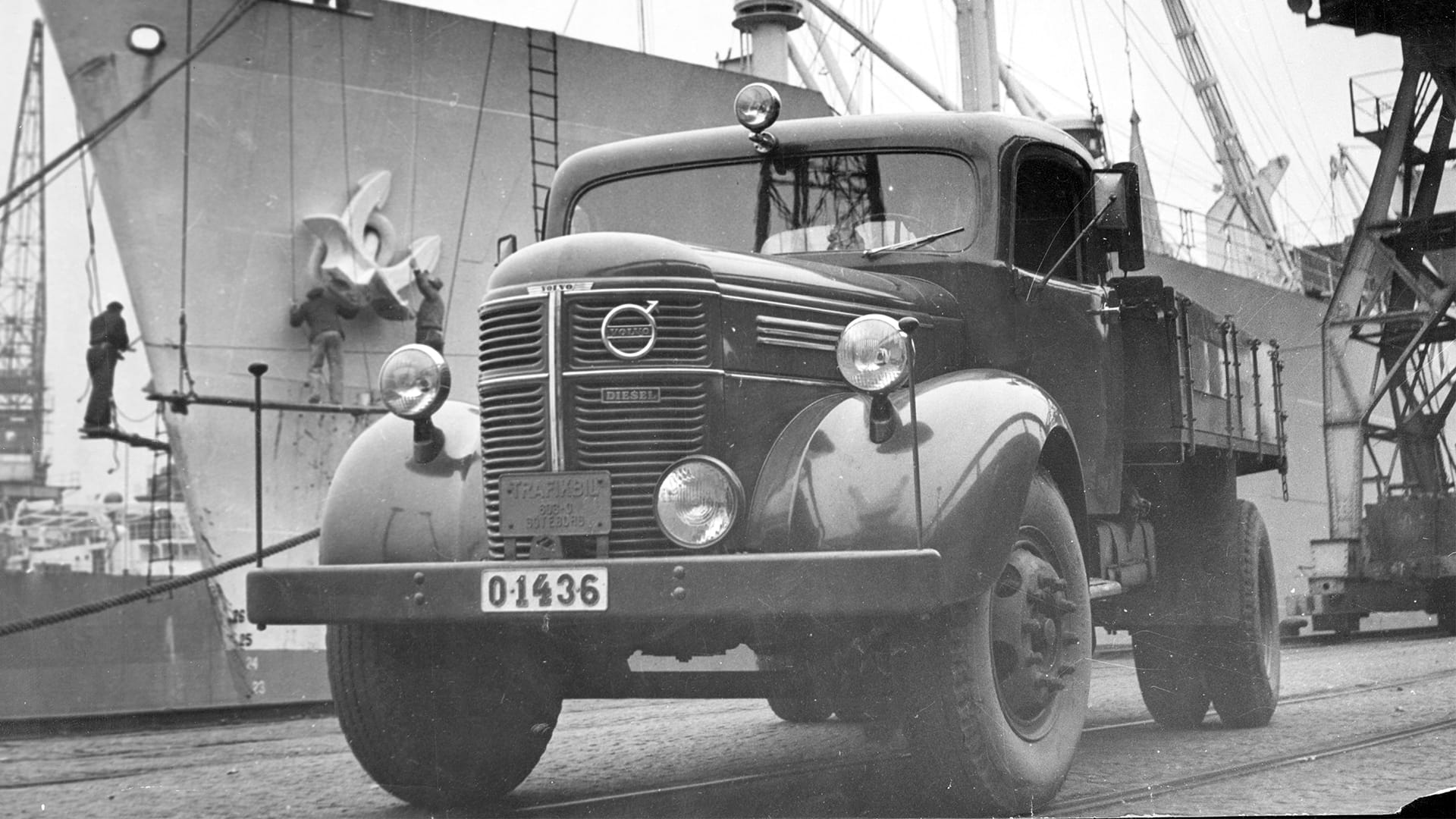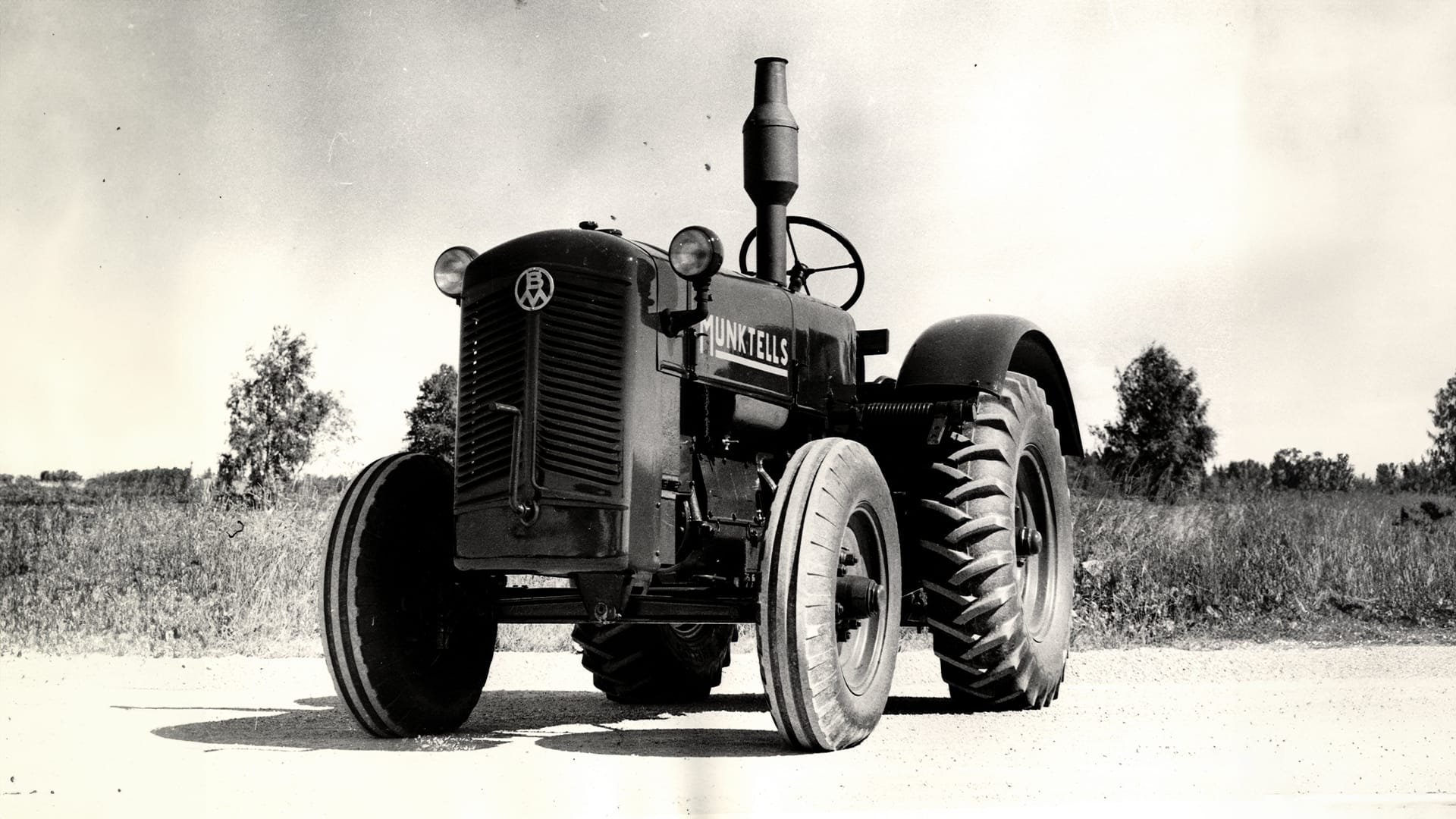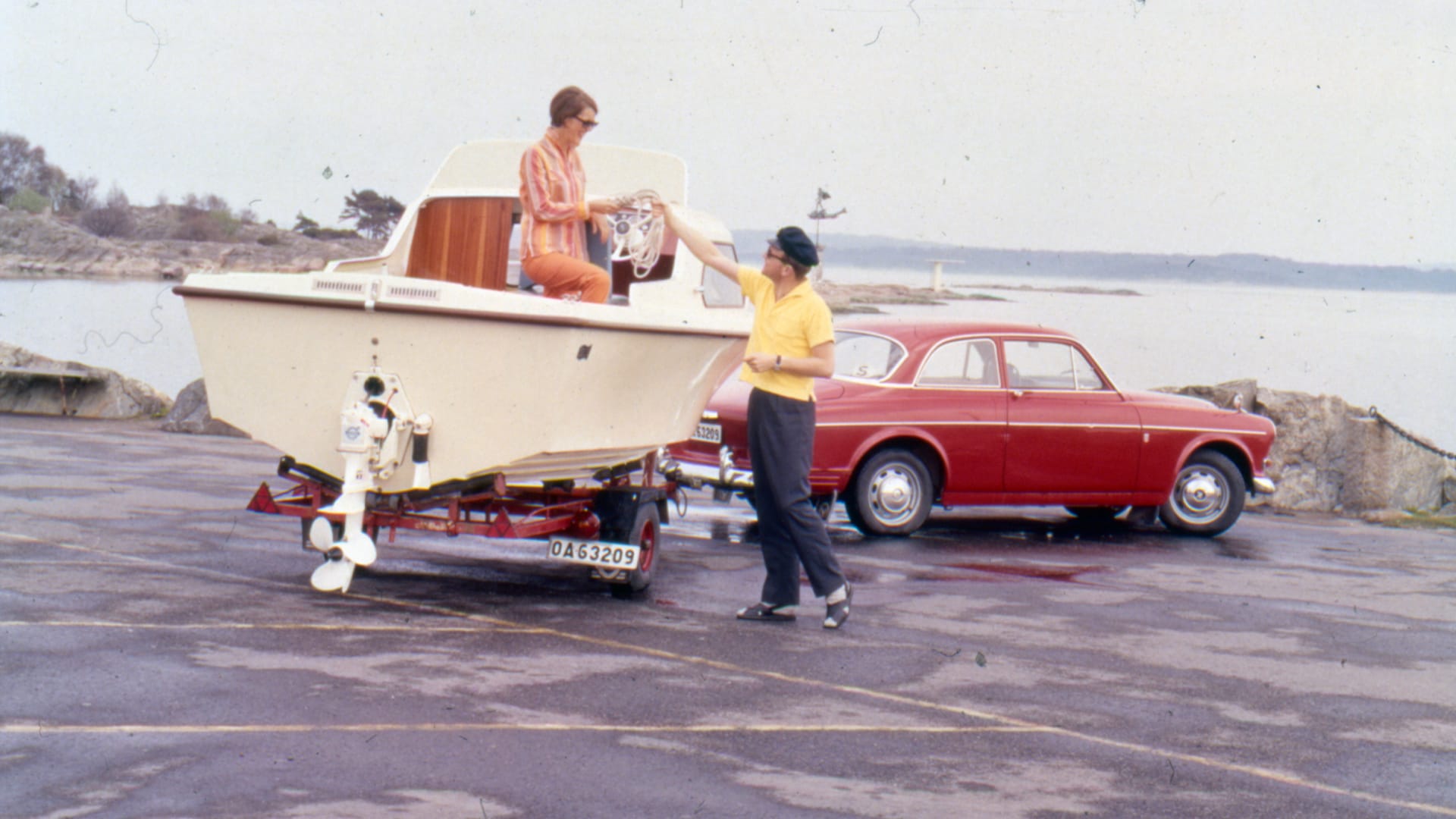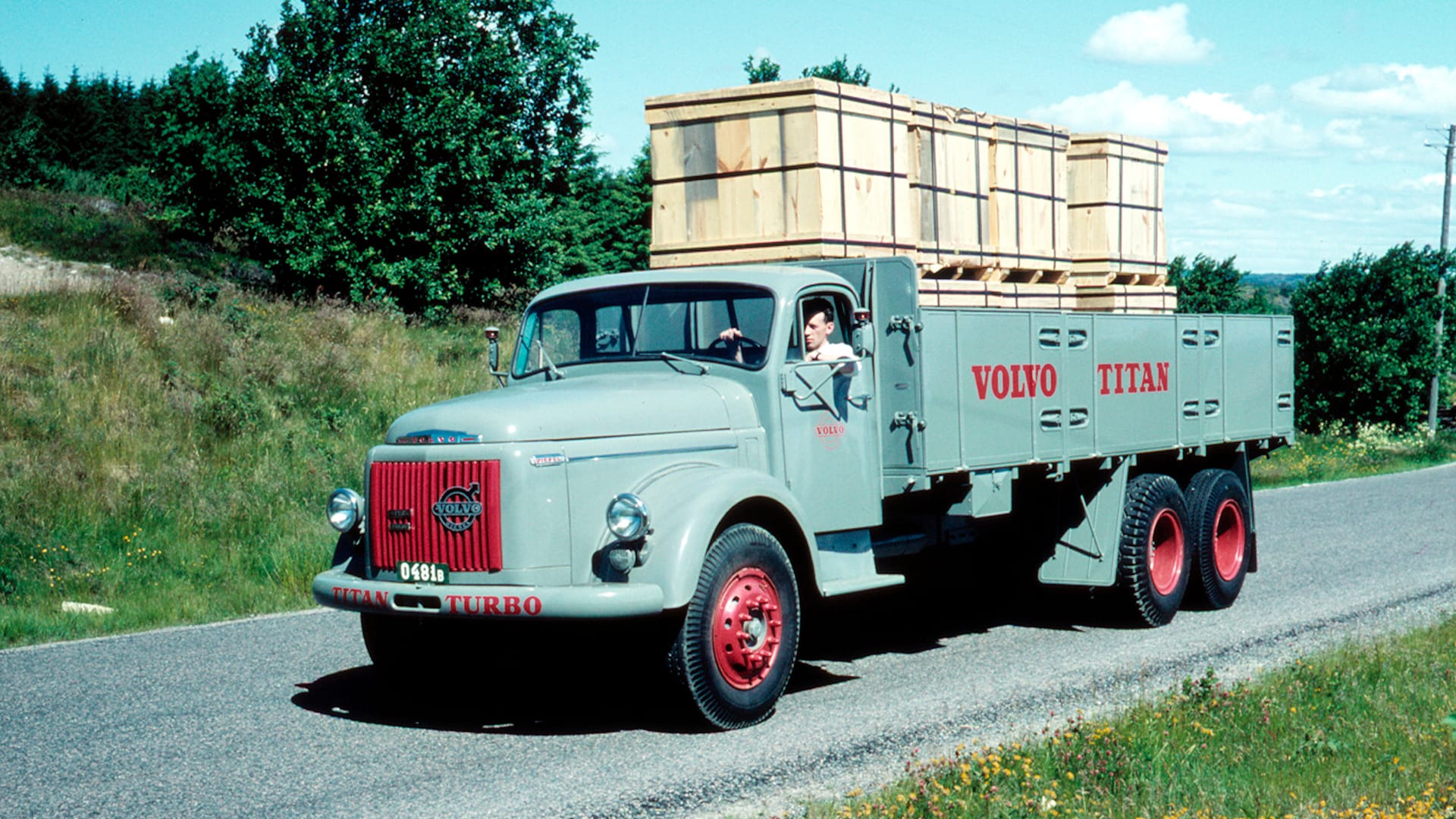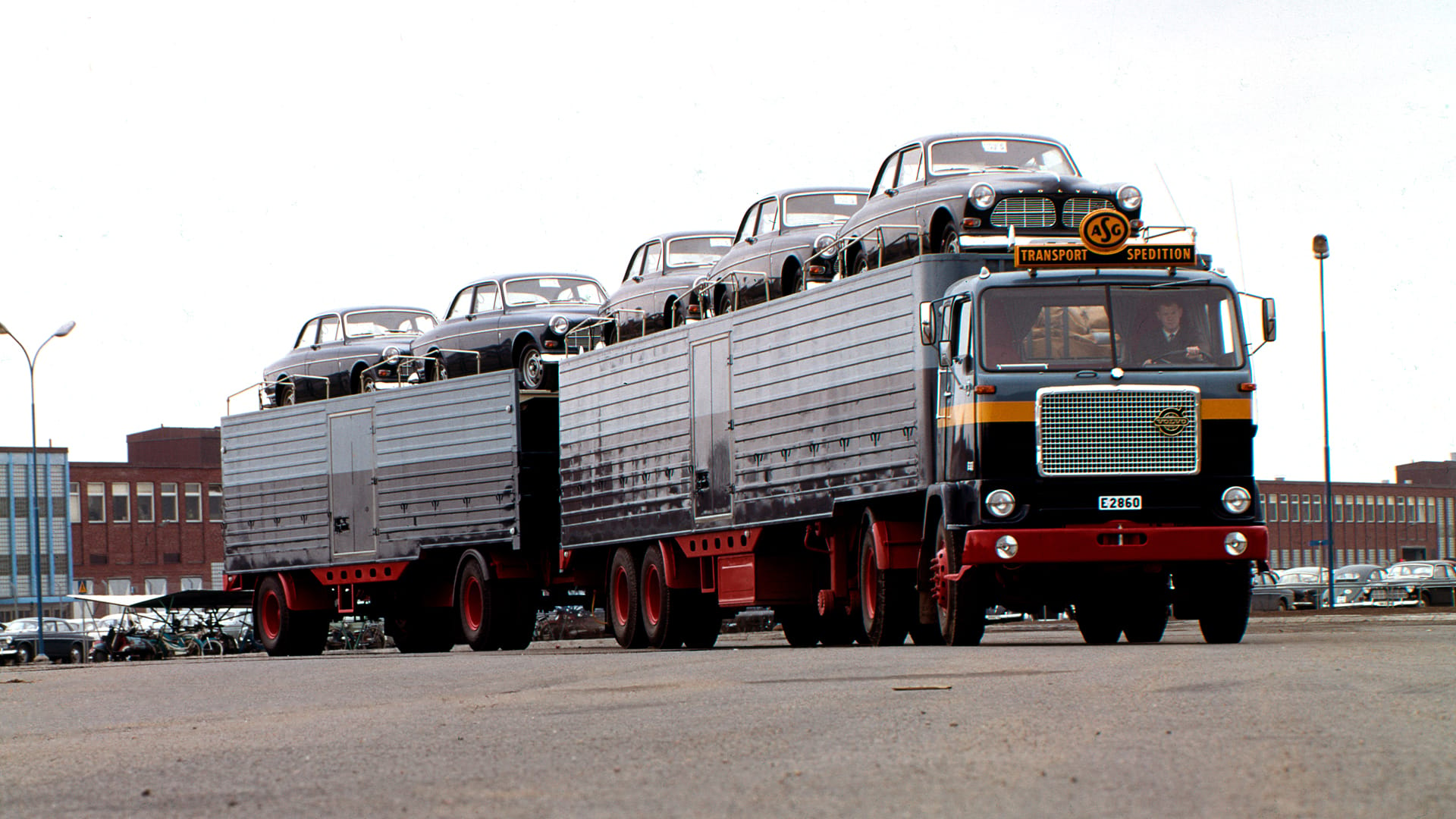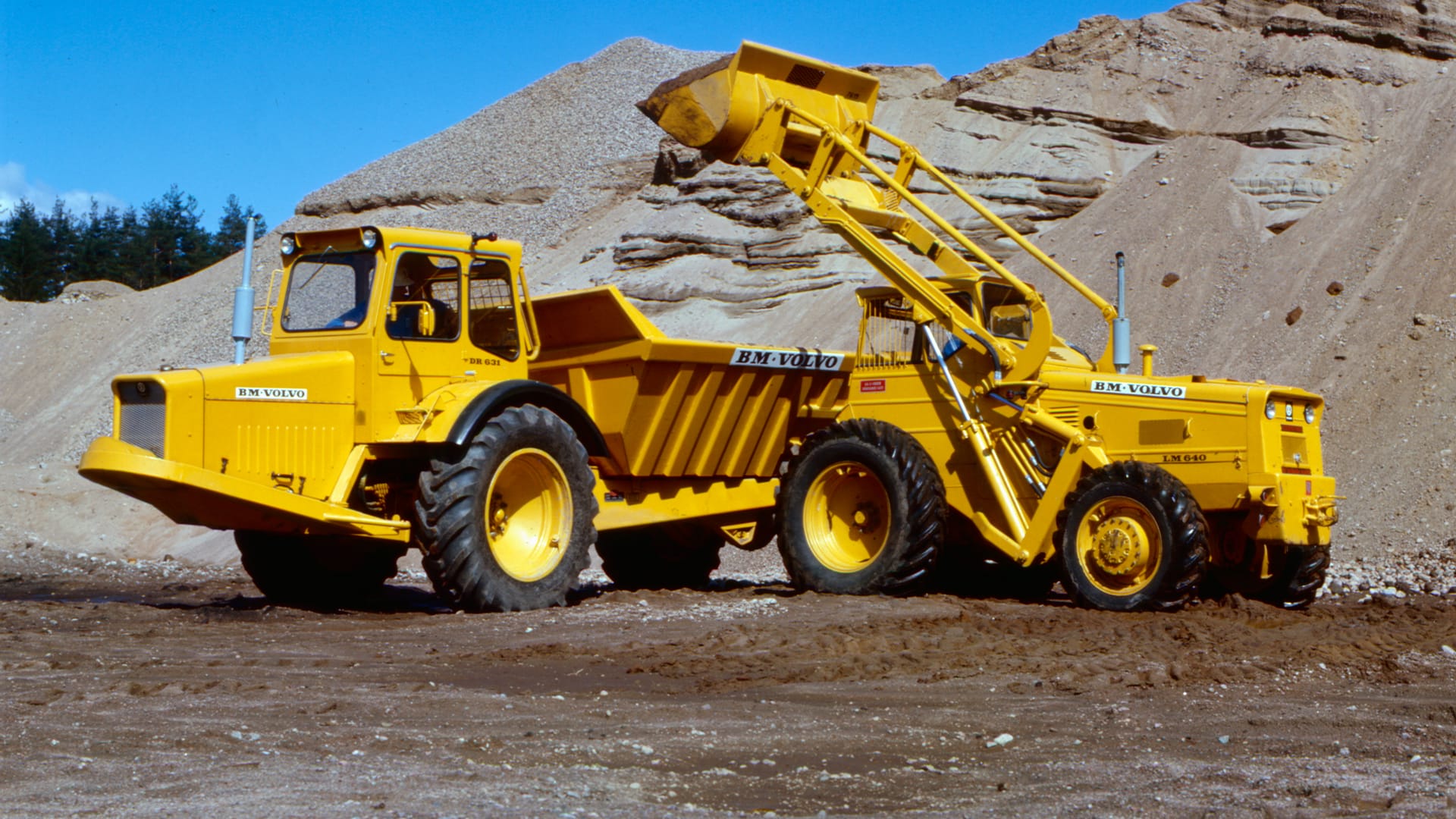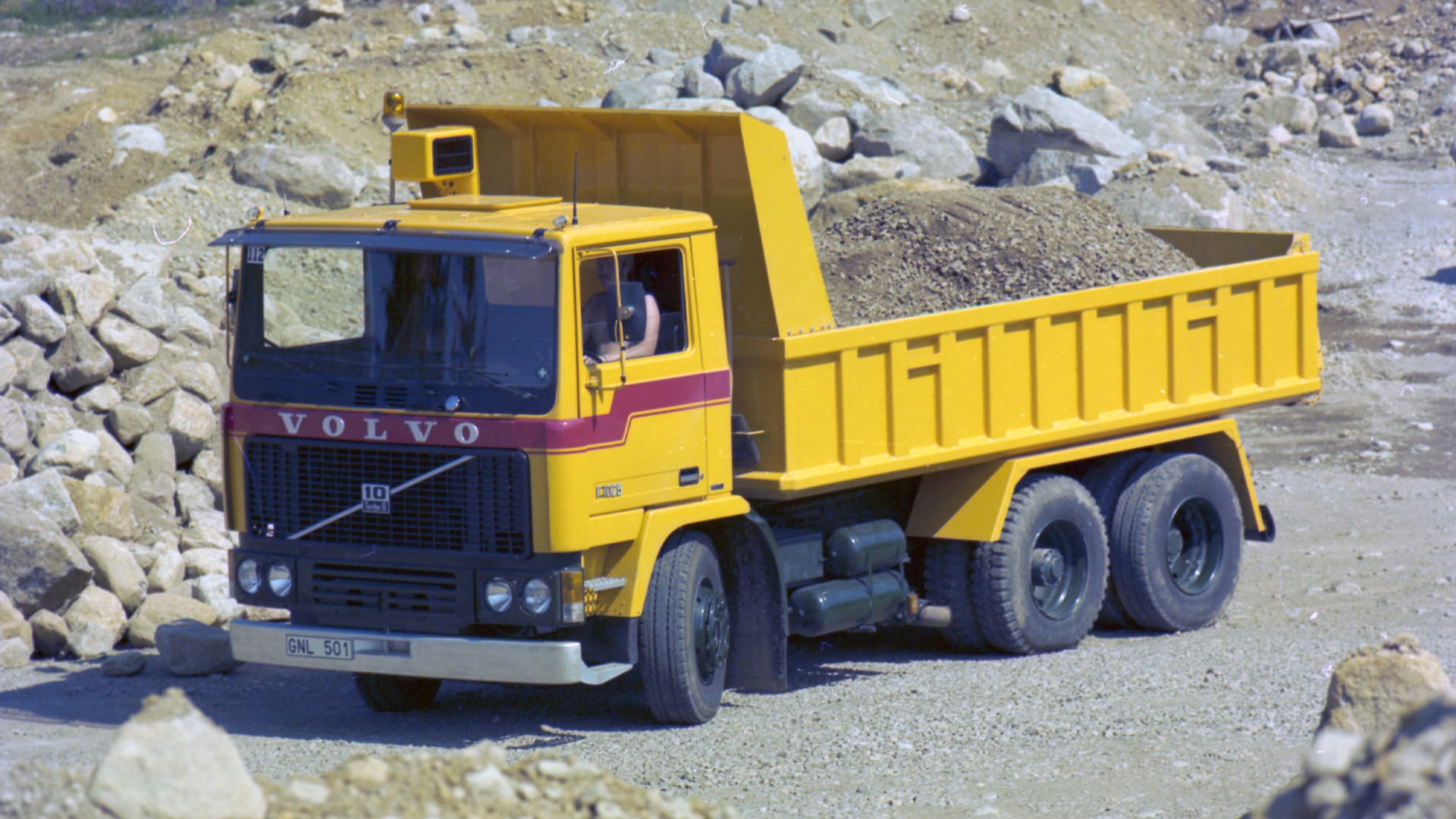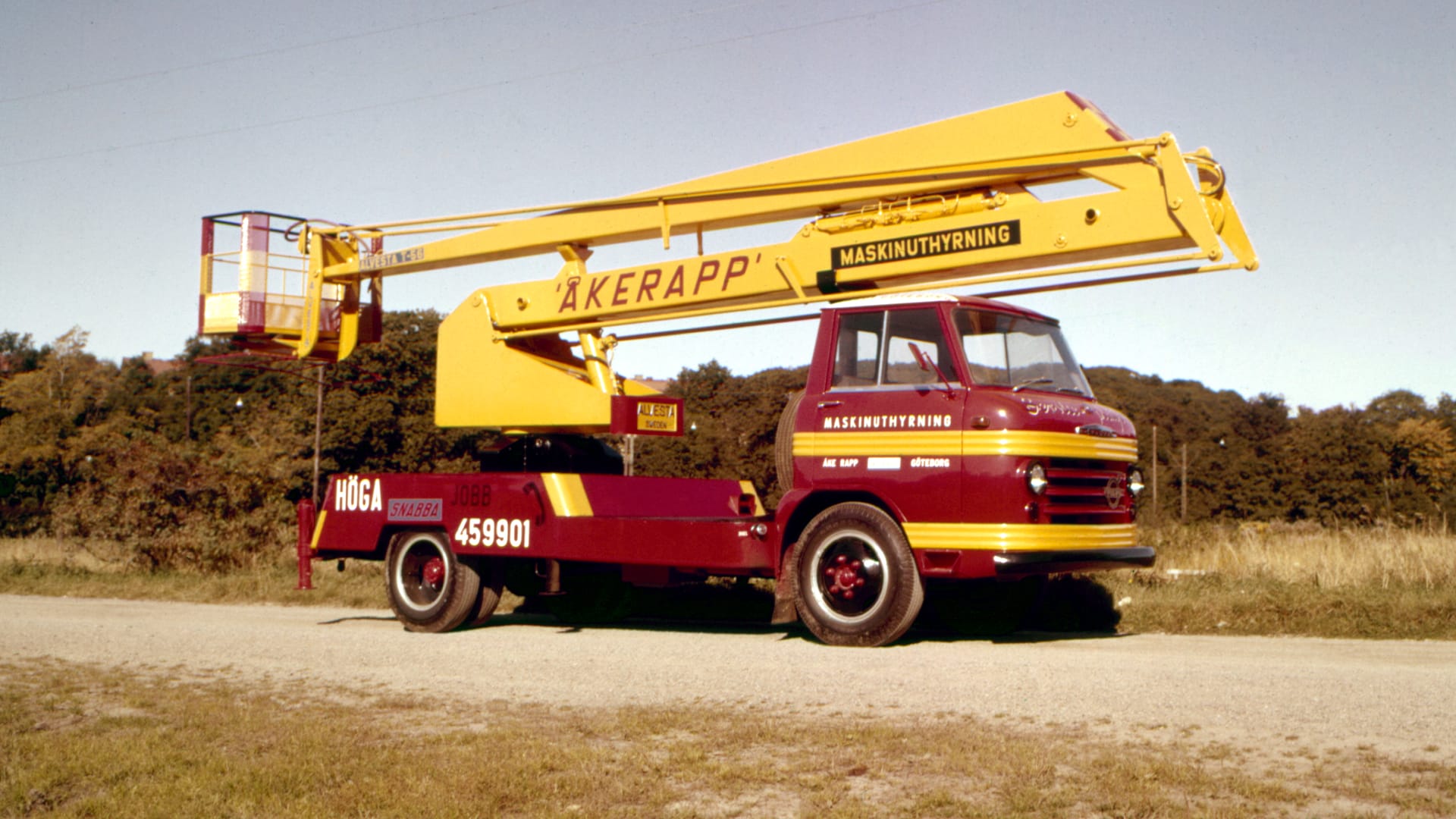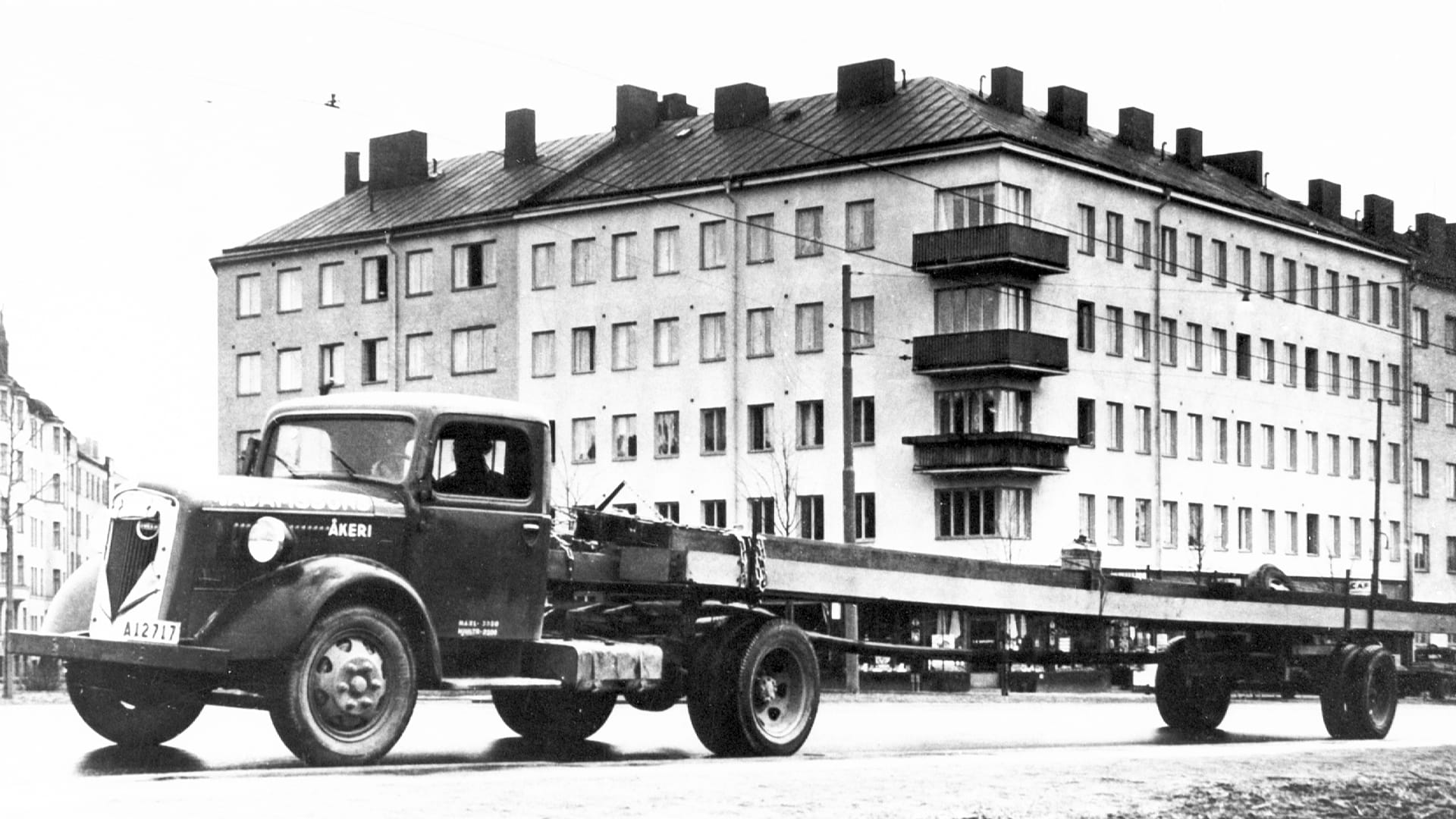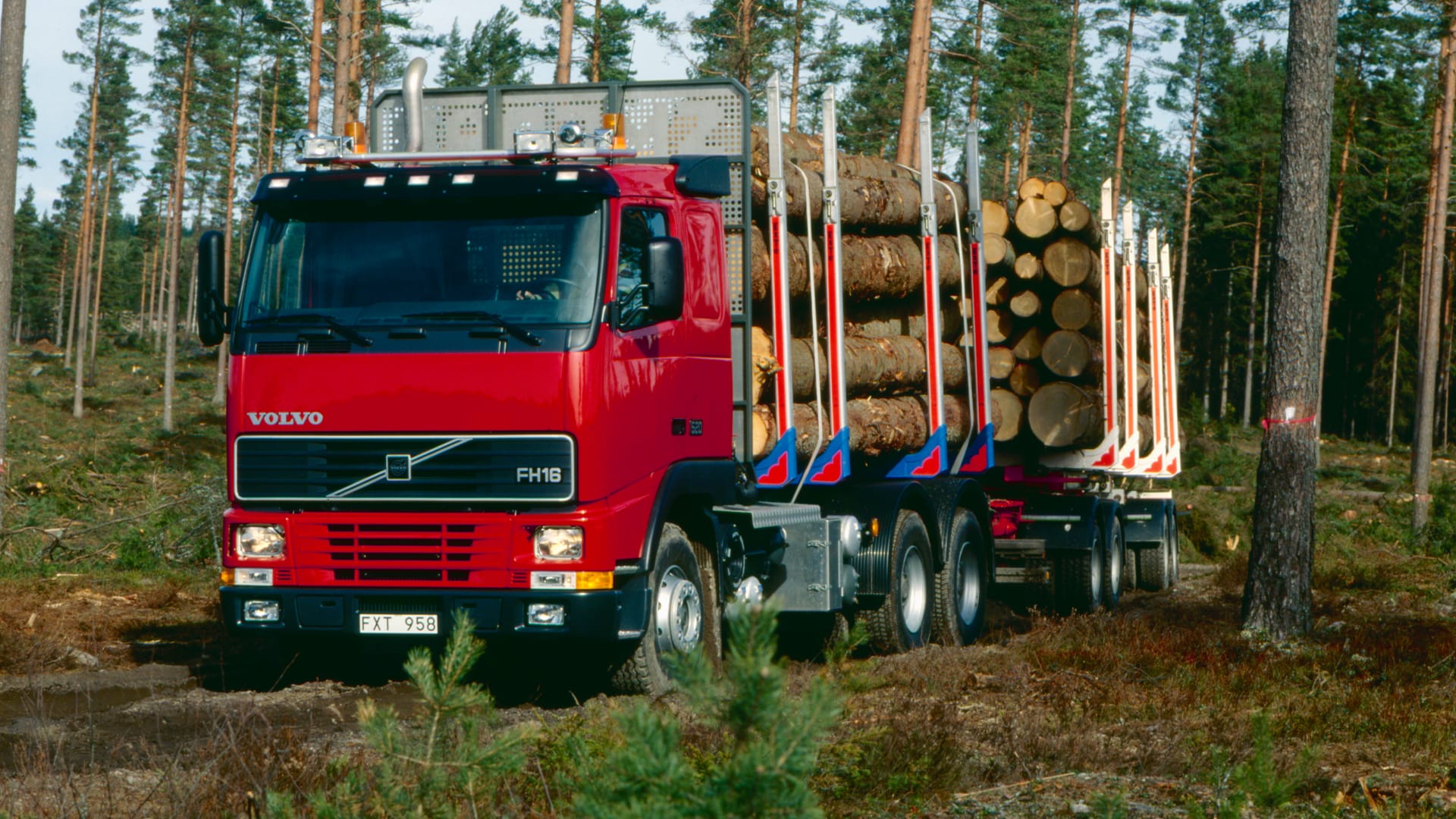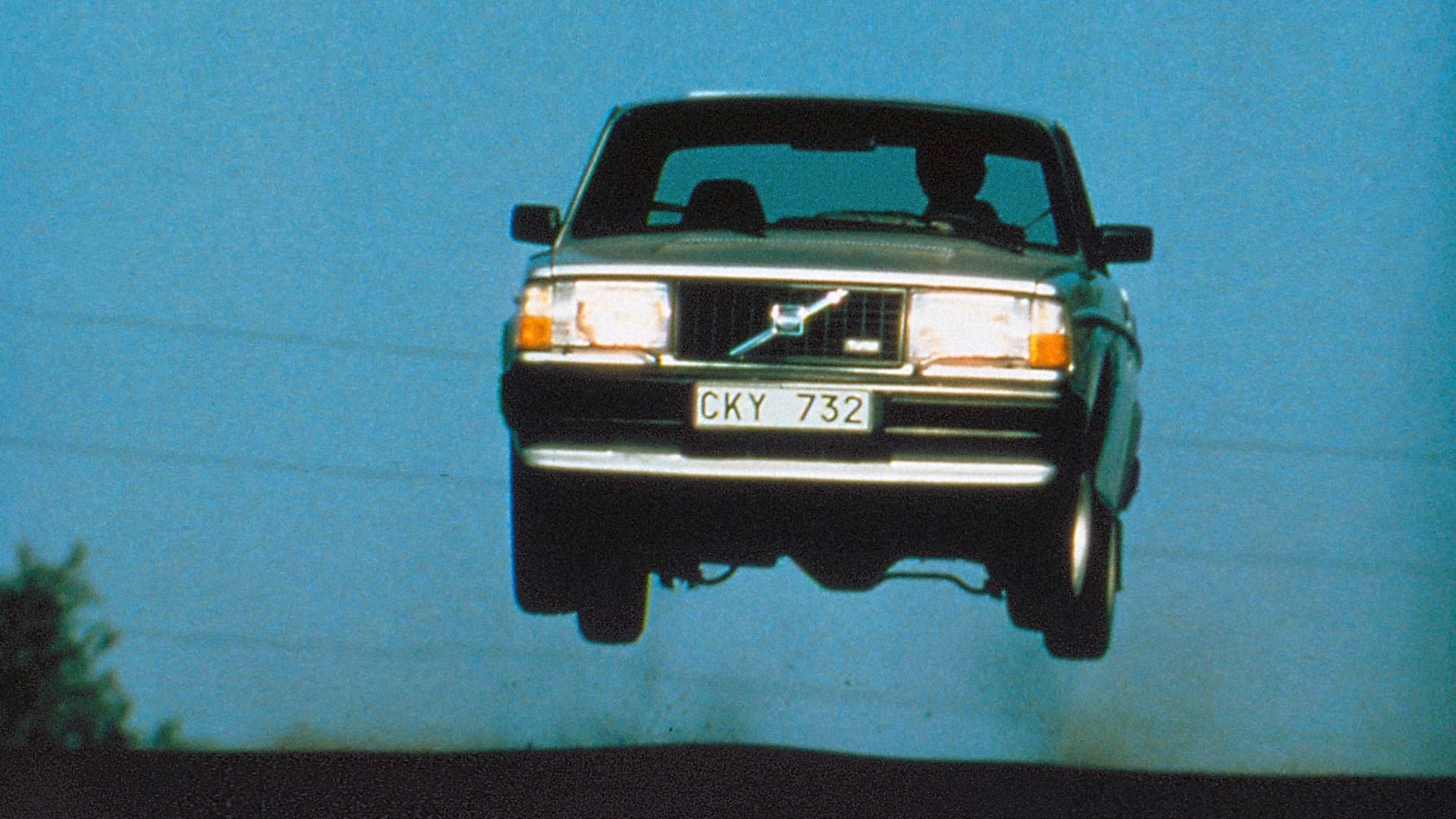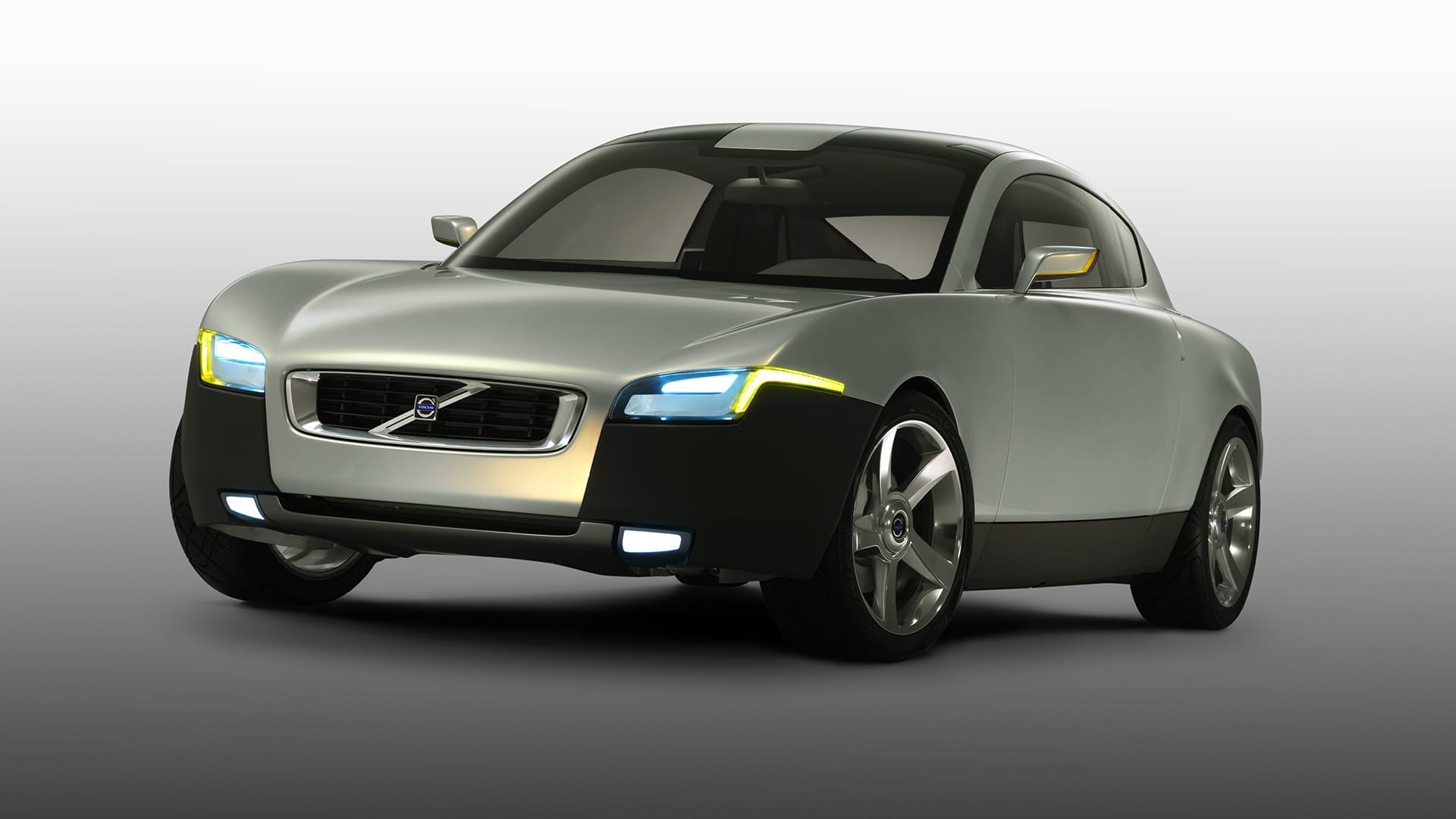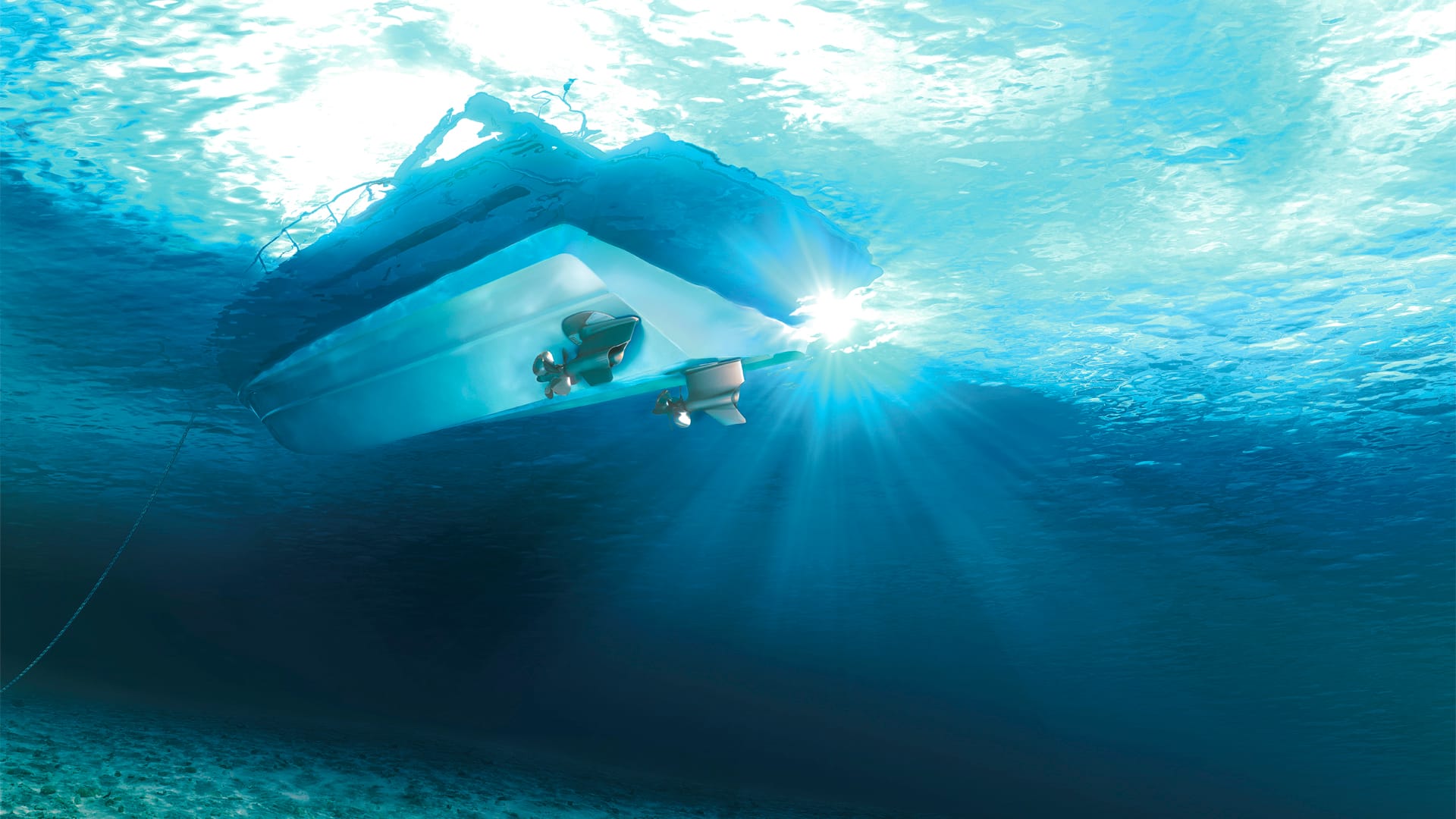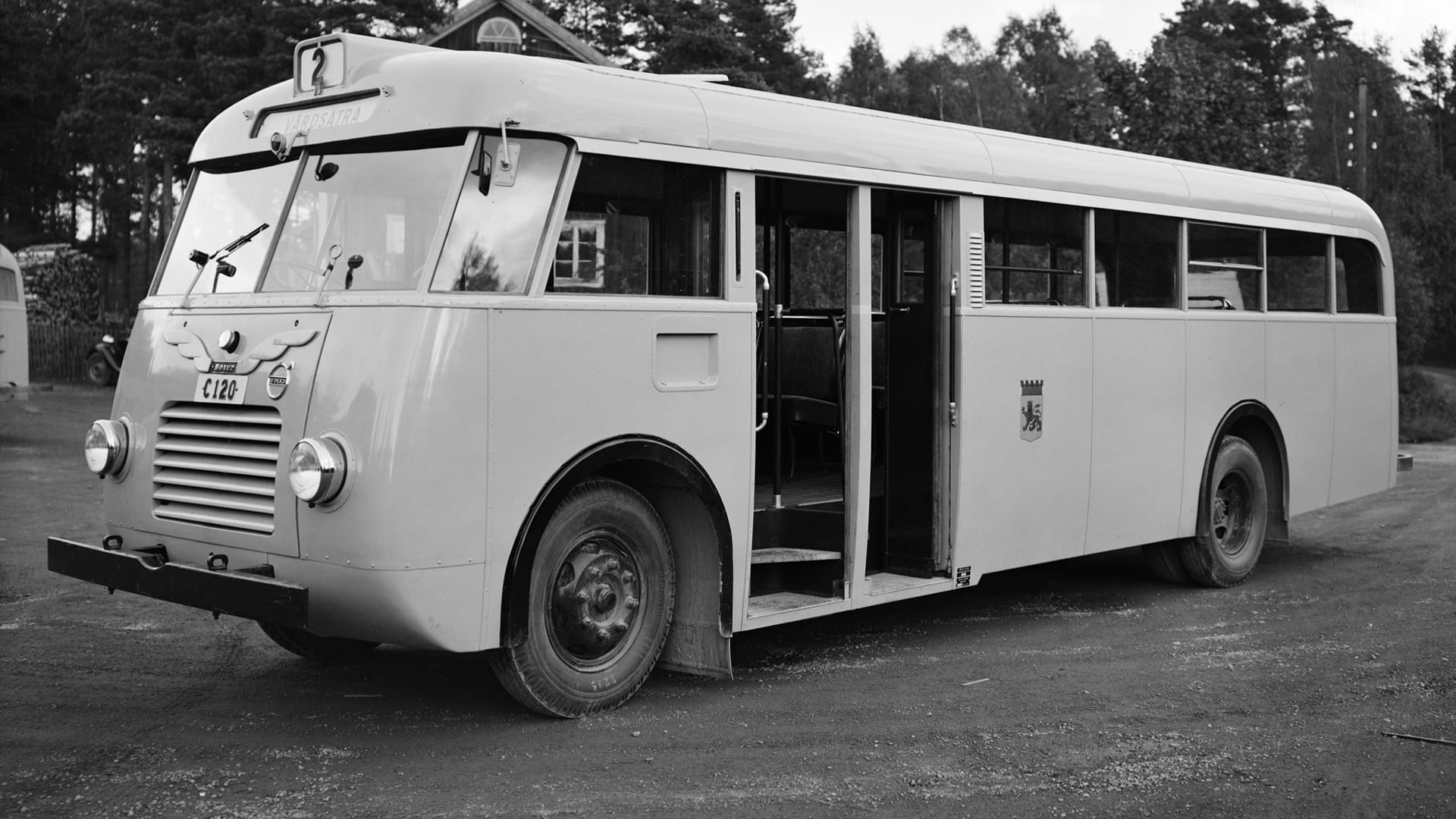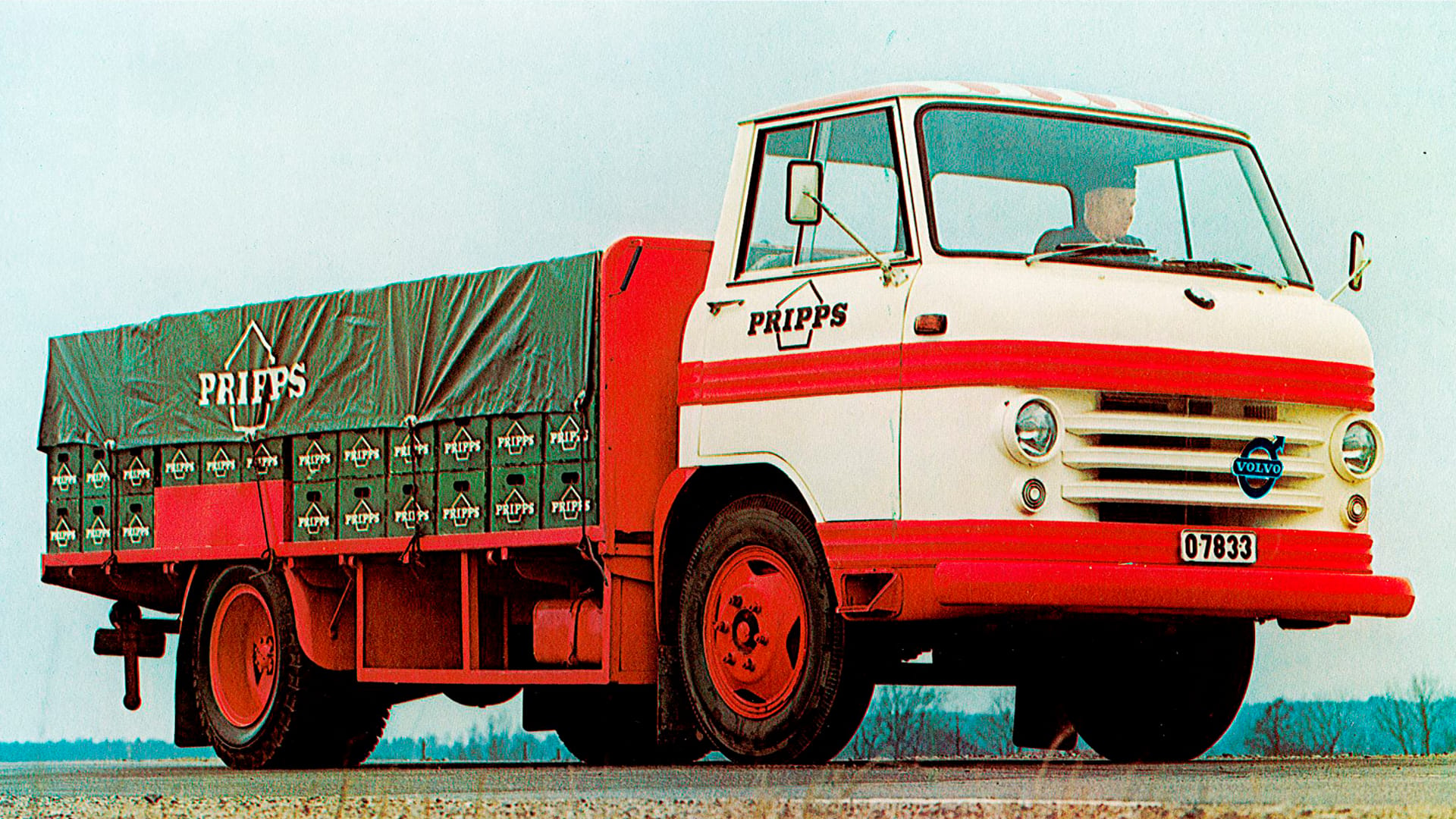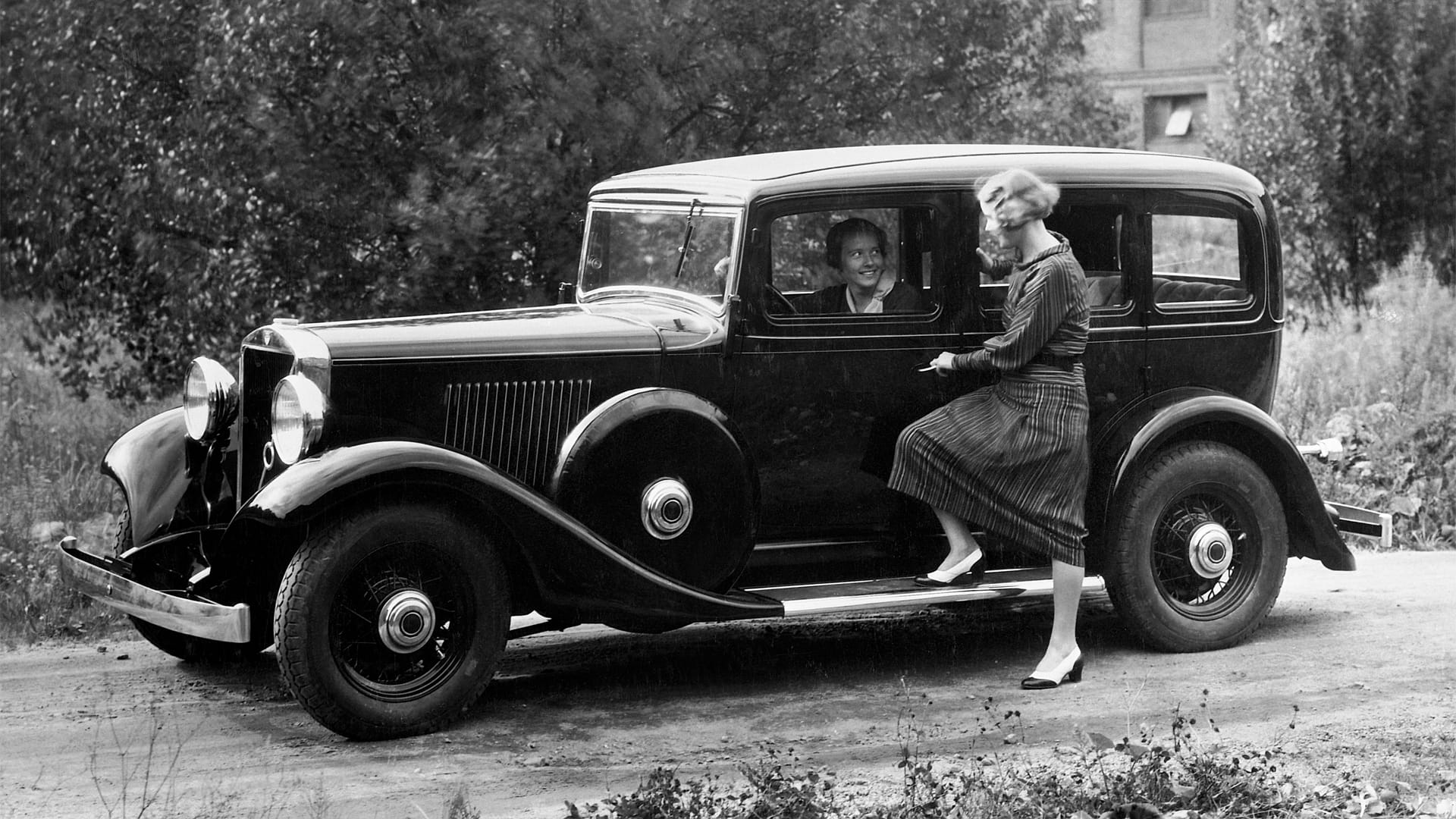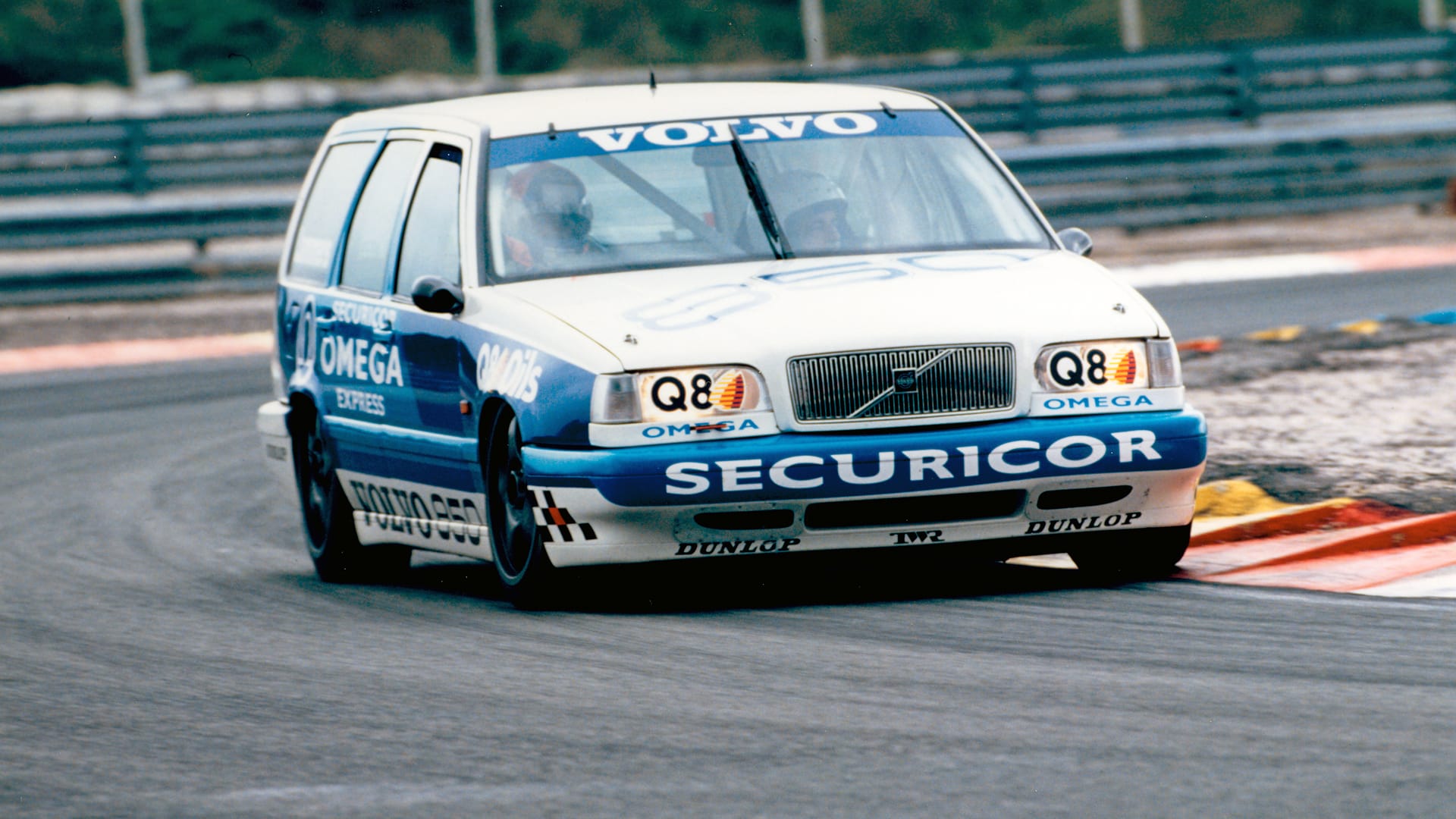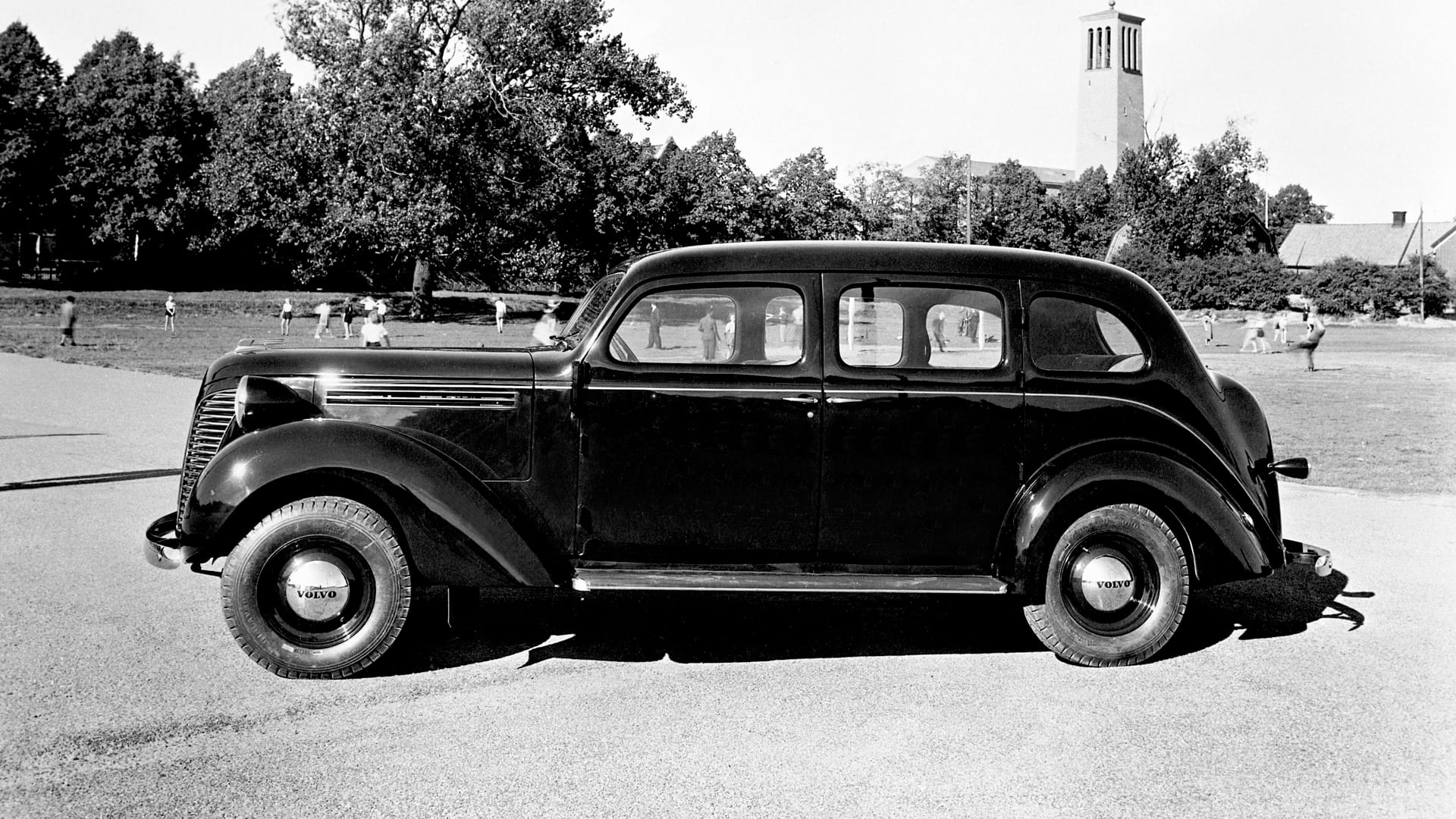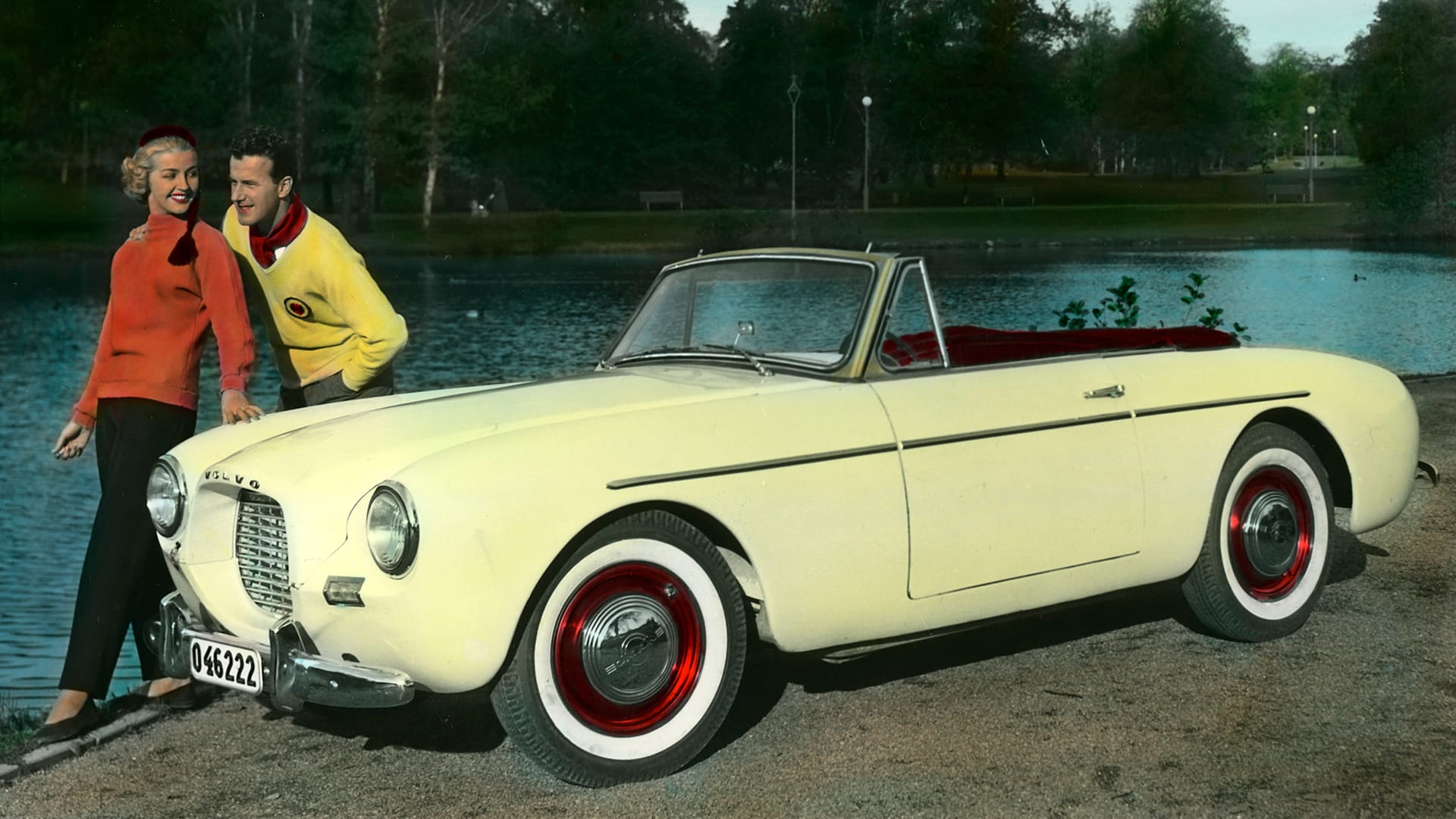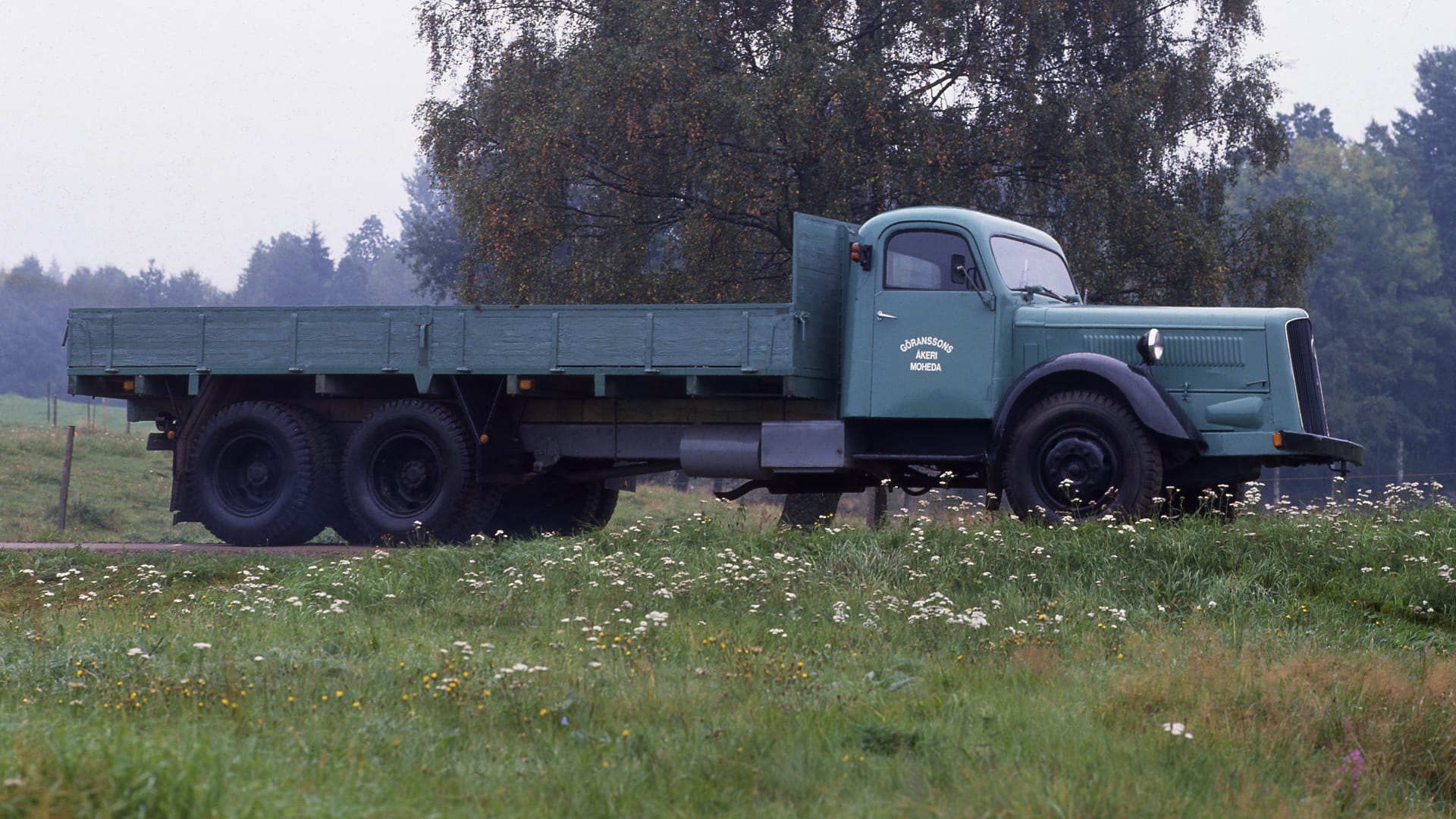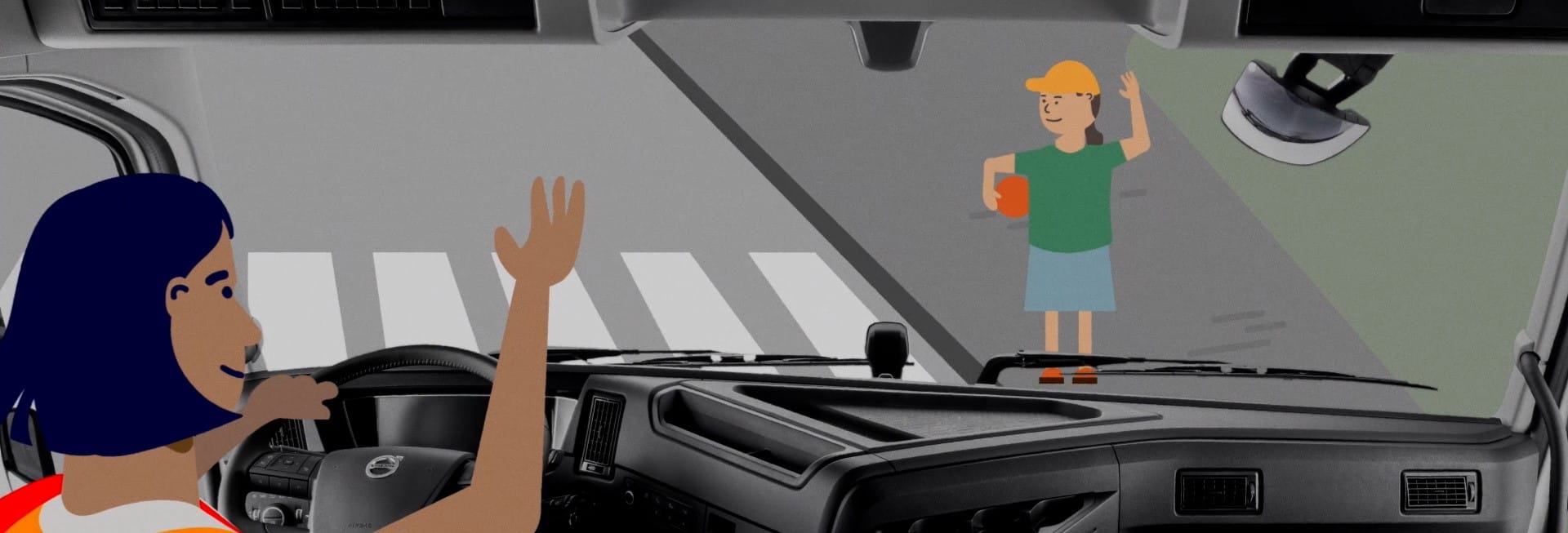Volvo P1800
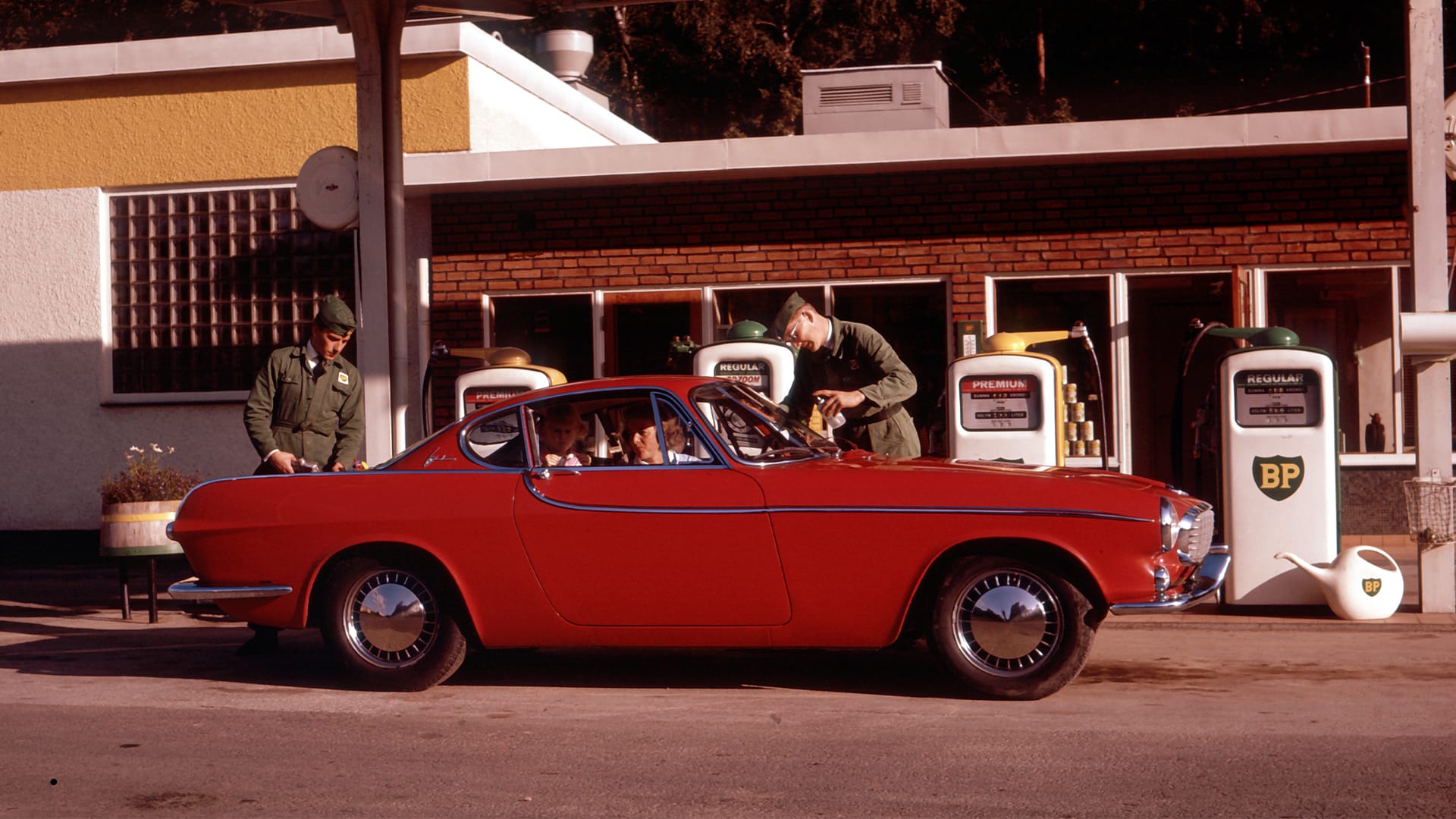
A star is born
The most beautiful Volvo? An icon? A Cult car? The P1800 is a sports car developed to enhance Volvo's image worldwide – and the strategy proves successful. The car is designed by Pelle Petterson, a young and unknown design student who collaborates with the Italian firm Frua. Not a bad first step in a long design career – besides cars, Pelle P has also designed boats, mopeds, lawnmowers, and sportswear.
At its launch in 1961, the P1800 features the newly developed B18 engine in a sports version with 100 horsepower. The model gets extra publicity when actor Roger Moore drives it in the British TV series "The Saint."
On a Friday in April 1966, American high school teacher Irv Gordon from Long Island, New York, buys the 1800S now displayed at World of Volvo. By driving the car for 3 million miles (over five million kilometres), Irv and his Volvo set a world record in 2013.
When Assar Gabrielsson sees the new Chevrolet Corvette at its launch in 1953, he immediately thinks Volvo should have an equivalent. It's the first mass-produced car with a fibreglass body, something Gabrielsson also jumps on. Contracts are signed with the boat manufacturer Glasspar in California.
Rejected fibreglass car
But the Volvo Sport – later also called the P1900 – is not a success. When the first prototypes arrive in Gothenburg, it's discovered that the frame is too weak, the fibreglass cracks, and the fit is poor. New Volvo CEO Gunnar Engellau, drives the car over a weekend and is reported to have said on Monday, "I thought it would fall apart!", and he decides to immediately discontinue the P1900. Only 67 units are produced between 1956 and 1957.
A new attempt
At the same time, Engellau is convinced that Volvo must have a flagship model, especially for export purposes. Therefore, Volvo's management decides to develop a new sports car, mainly based on components from the Amazon but with a shorter wheelbase: 245 cm instead of 260. Helmer Petterson, who participates in several Volvo projects, including the PV444, is involved in the decision to discontinue the P1900 and now joins the new project.
Father and son sketch
Helmer Petterson’s son Pelle studies design at the Pratt Institute in New York in the mid-1950s. Helmer and Pelle start bouncing back ideas on what the new sports car could look like. Helmer sends material across the Atlantic, and Pelle sends sketches. At the same time, Volvo's management contacts several design firms in Italy, which are in their golden age. Carrozzeria Ghia in Turin is offered the task of developing Volvo's new sports car, and its boss Luigi Segre meets Volvo's management, led by Gunnar Engellau.
Italian design
Engellau chooses the proposal that appeals to him the most but becomes irritated when he learns that it's Helmer Petterson's own son Pelle who is behind it. Fiat, Ghia's main customer, also looks unfavourably at the firm doing jobs for other car manufacturers. Therefore, Ghia acquires the neighbouring company in Turin, Carrozzeria Frua, and becomes free to work for other companies.
Prototypes
Frua is tasked with developing the Volvo P1800, and 25-year-old Pelle Petterson goes to Italy to start work on the prototypes. He is impressed by the craftsmanship and how Frua's designers work with templates, much like in boatbuilding. The P1800 becomes Pelle Petterson's only car in his career. Instead, he mainly focuses on designing boats and also mopeds, lawnmowers, clothing, and golf clubs.
British production
When the prototypes are ready, the next question is where the car will be manufactured. The bodybuilder Karmann in Germany is contacted, but Volkswagen needs their capacity. Another German manufacturer, NSU, is considered, as well as another one in France. But Volvo eventually finds the British company Pressed Steel Co Ltd, which presses the bodies at its Linwood factory in Scotland. Final assembly is also in the UK, as Volvo has limited capacity in Gothenburg. Jensen Motors in West Bromwich outside Birmingham is contracted to assemble 10,000 cars, far more than the company has done before.
1800 cc engine
At the end of 1957, the three prototypes built by Carrozzeria Frua are driven to Gothenburg for a final review. In May 1959, Volvo releases the first images of the P1800, and the car is publicly unveiled for the first time at the Brussels Motor Show in January 1960. Although the plan originally was to have the sports engine from the PV544 - the B16B - also in the P1800, it gets an entirely new and larger engine, the B18B. It has a five-bearing crankshaft, cylinder head with separate intake ports, and is overall very robust. The power is stated as 100 hp. The gearbox is four-speed, but for an additional cost, you can get the Laycock de Normanville overdrive, used in many British cars, including the Jensen Interceptor.
Lower quality
A lot of components come from British subcontractors: electrics from Lucas, brakes from Girling, bearings from Vandervell, wheels from Sankey, and carburetors from SU. But there are also suppliers in the USA and Italy. Volvo contributes with the engine, gearbox, and chassis, which are sourced from the Amazon but modified. However, the P1800 experiences problems. The quality of the assembly work in the Jensen factory is poor, including painting and sealing strips issues. At the same time, the bodies from Scotland are poorly made, and all this leads to repeated disputes between Volvo and Jensen.
Production moves home
Therefore, when the Torslanda factory opens in 1963, the assembly of the P1800 is moved to the Lundby factory in Gothenburg, wich now has the capacity. At the same time, the car is renamed 1800 S – S as in Sweden. Of the 1964 model year, the first 6,000 cars are made by Jensen, and the rest are produced in Lundby. However, the bodies still come from Scotland, and it's not until 1969 that production is transferred to Volvo in Olofström. Volvo is also forced to compensate Jensen because the contract for 10,000 cars is terminated prematurely.
More power
In 1965, the engine gets higher power, 115 hp, by improving the exhaust pipe. A visible change occurs in 1967 when the upward-bent chrome strip on the side of the car becomes straight. The engine is then upgraded in various stages. In the fall of 1968, a two-litre engine, B20, with 118 hp is launched. In 1969, the new engine is equipped with fuel injection, which further increases the power, but the P1800 never becomes a sports car. Customers rightly see the P1800 more as a Gran Turismo, GT, a comfortable and beautiful long-distance car.
Building image
The P1800 also fulfils its role as a brand builder for Volvo. In March 1969, the American motor magazine Road & Track presents a survey on what car owners think of their cars and how strong brand loyalty is. A whopping 83 percent of P1800 owners say they intend to buy a Volvo again. The sales of the last years also show how important the model is in strengthening Volvo's brand in the important export markets. During 1971-73, 13,134 cars are sold – but only 344 remain in Sweden. Eight out of ten are exported to the USA.
The Saint
When the British TV channel ITV is to make a series based on Leslie Charteris' "The Saint", the Jaguar E-type has just been launched, and it feels obvious that the main character Simon Templar, played by Roger Moore, would drive one. But Jaguar cannot provide a car. The producer then shows a picture of the P1800 to Roger Moore, who says his "car heart skipped a beat." The production company calls Volvo in London, who responds that yes, you can have a car. Of course, the product placement is worth a lot, but it's worth noting that Volvo receives full payment for the car. Later, Roger Moore also drives the P1800 privately. So does our future king, Crown Prince Carl Gustaf. When he gets his driver's license in 1966 as crown prince. The P1800 becomes his first car.
ES is launched
As the 1960s come to an end, it becomes increasingly clear that the P1800 is starting to become outdated. Road & Track tests the 1970 model year, and the verdict is harsh: "The model enters its eleventh year, and not even improved performance is enough for it to compete against more modern designs." Therefore, in the fall of 1971, a new version of the 1800 model is presented – the 1800 ES. It's a hatchback with an extended roof and glass hatch, designed by the chief designer Jan Wilsgaard. The car gets peculiar nicknames like the “hearse” and, perhaps more locally in Gothenburg, the “fish car”. In German-speaking countries, the car is more famously known as Schneewittchensarg ("Snow White's coffin"), referring to the glassed rear end. In England, the model type is called a “shooting brake” or sports wagon. Now hunters and golfers have space for their equipment, while the car retains many of its sleek lines. The ES is produced for two years, 1972 and 1973. In total, from 1961 to 1973, 47,462 1800 cars are produced, of which 8,077 are of the ES variant.
Irv Gordon's car
The car displayed at World of Volvo has its own story. Teacher Irv Gordon from Long Island, New York, buys the new car on a Friday in April 1966. Directly after that first weekend, on Monday, he is back at the dealership. He is not dissatisfied, on the contrary, he has driven so much over the weekend that it's time for the first service. Then he continues to drive. And drive. And drive. Irv Gordon commutes 200 miles every day to his job as a high school teacher in natural sciences, but he also drives a lot in his spare time.
World record
In 1987, Irv Gordon has driven a million miles, 1,600,000 kilometres. Then he passes two million miles (3,200,000 kms), then three million miles (4,800,000 kms), and finally, the odometer reaches 3.25 million miles – 5,230,000 kms. He changes the engine oil every 5,000 kms and gearbox oil every 40,000 kms. He rebuilds the B18 engine twice but never replaces it. The car never fails, always starts, and needs no repairs. Irv Gordon passed away in 2018, but his car lives on – probably forever.
